

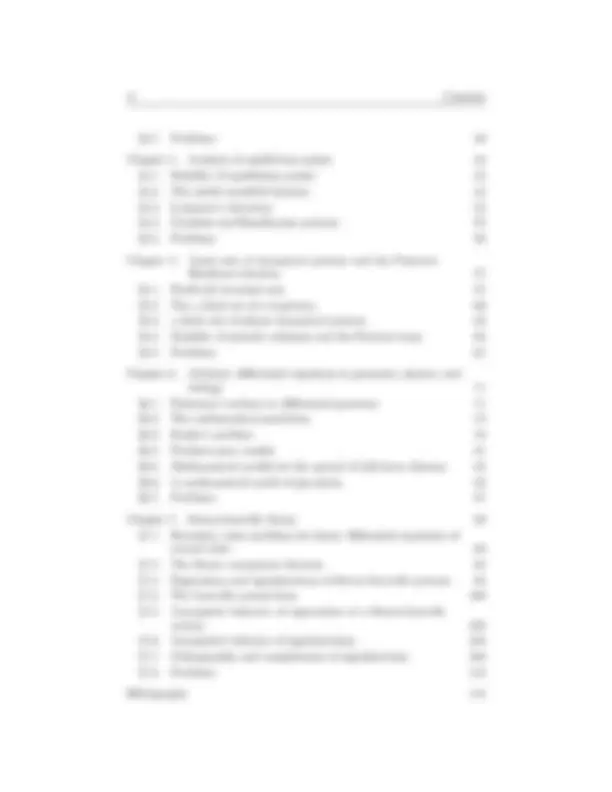

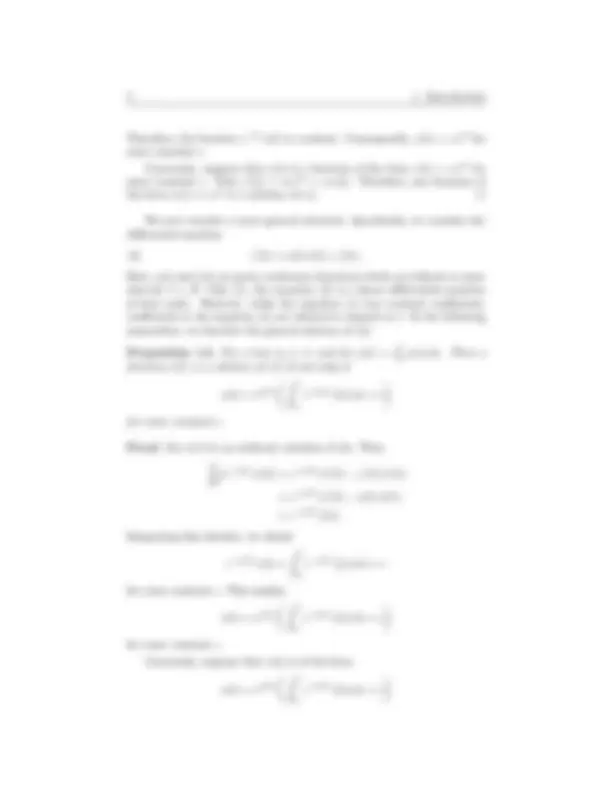
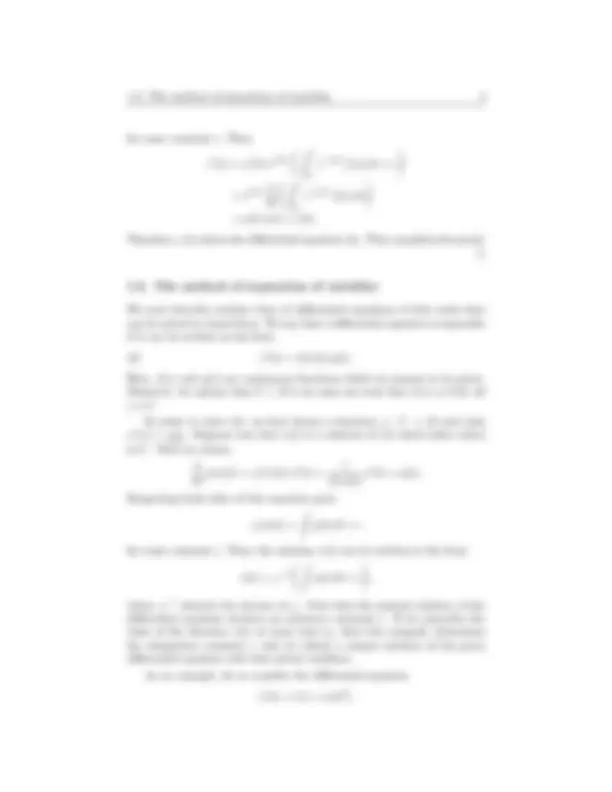
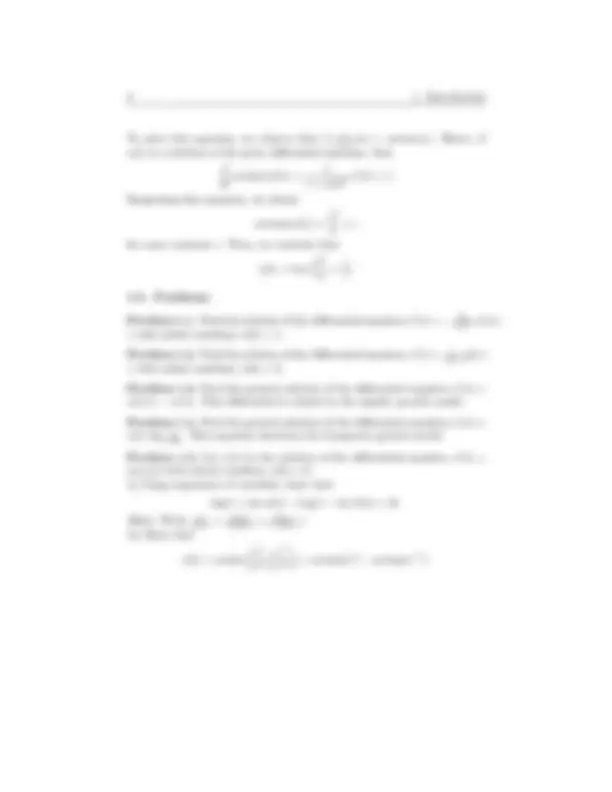
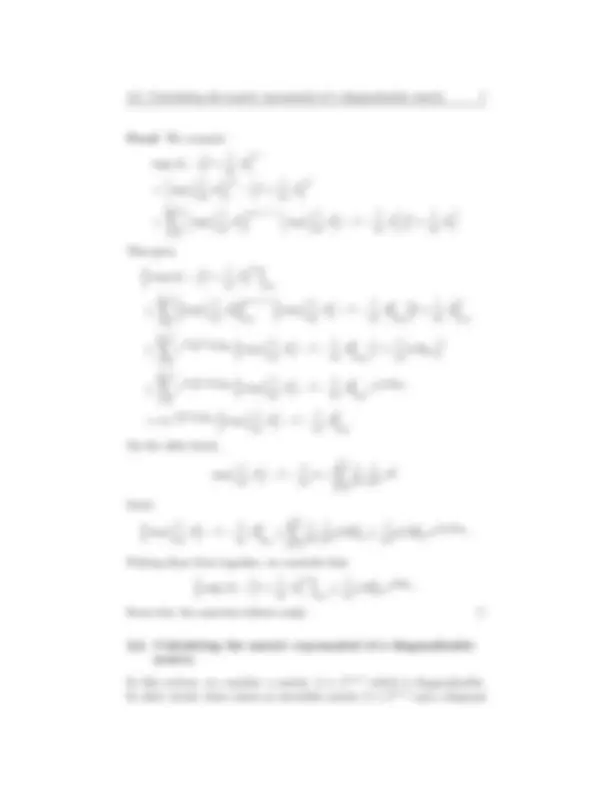
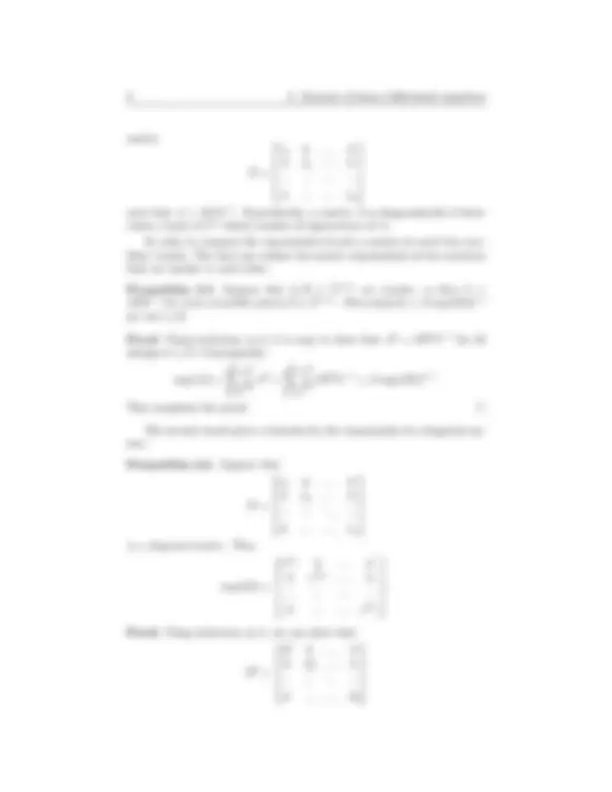
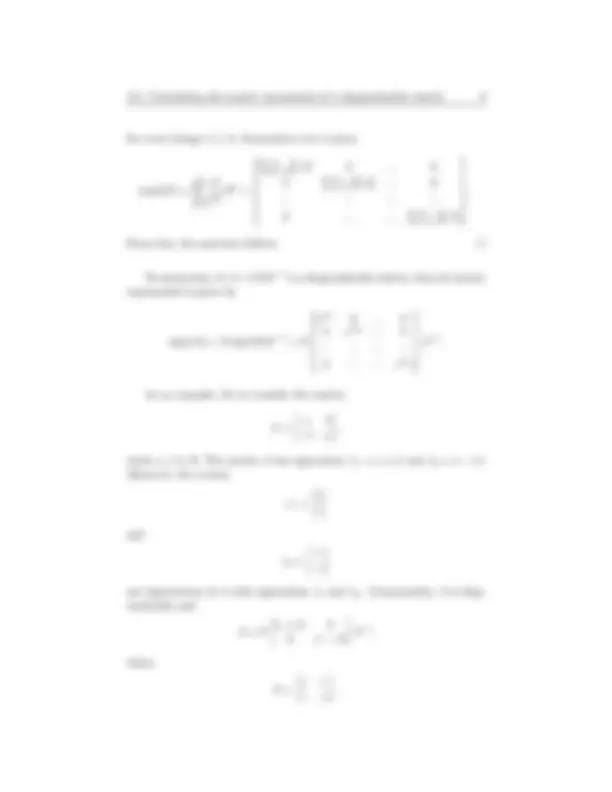
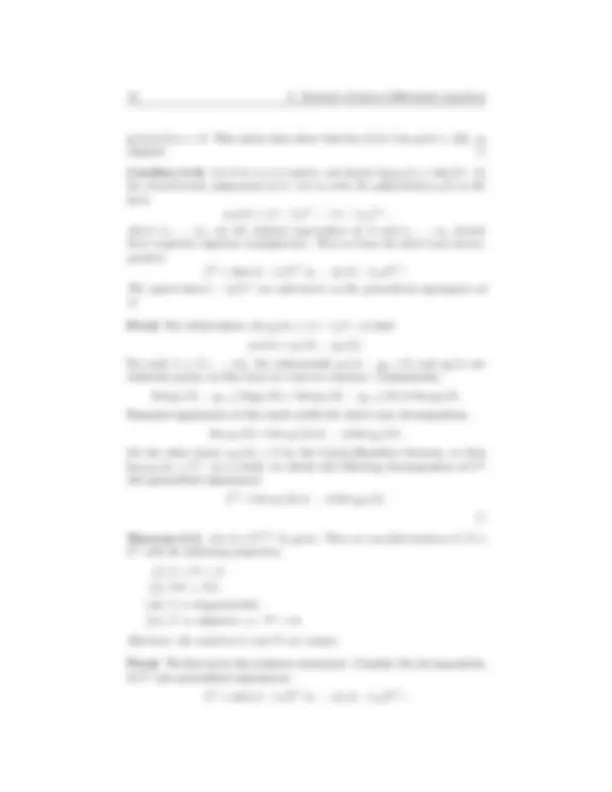
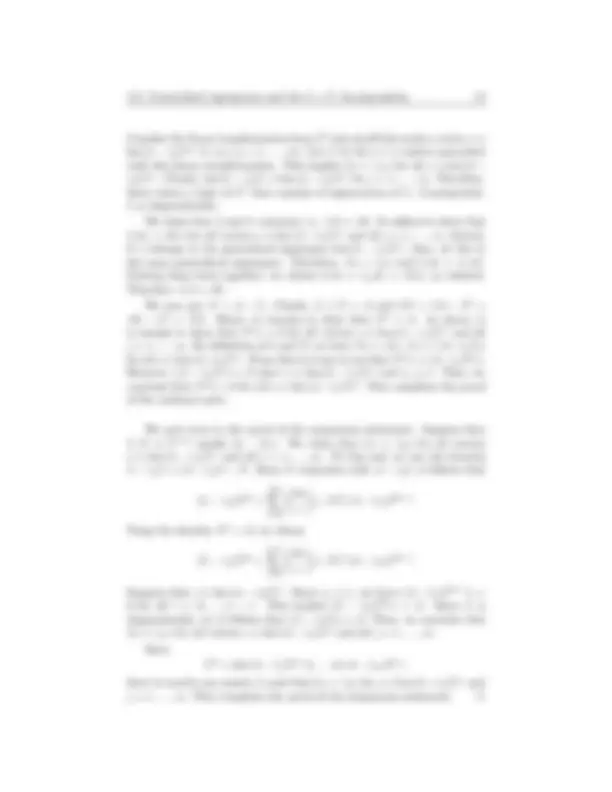
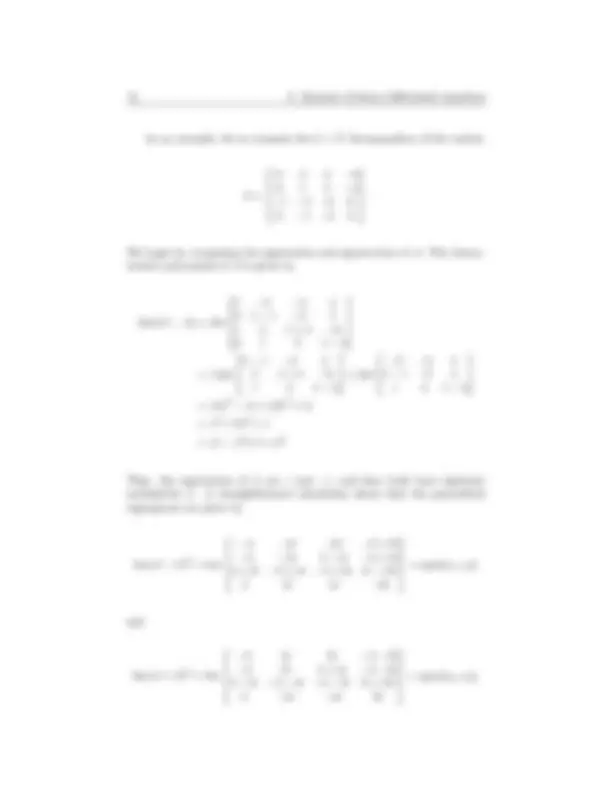
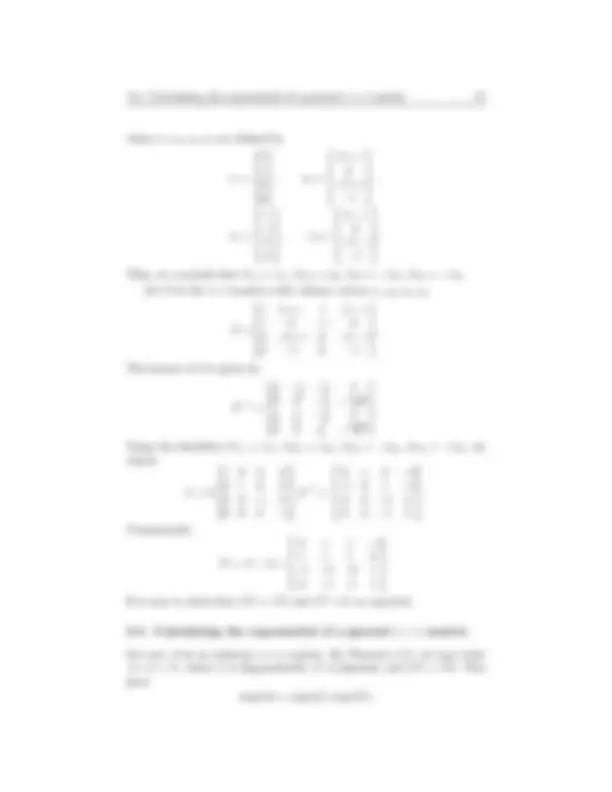
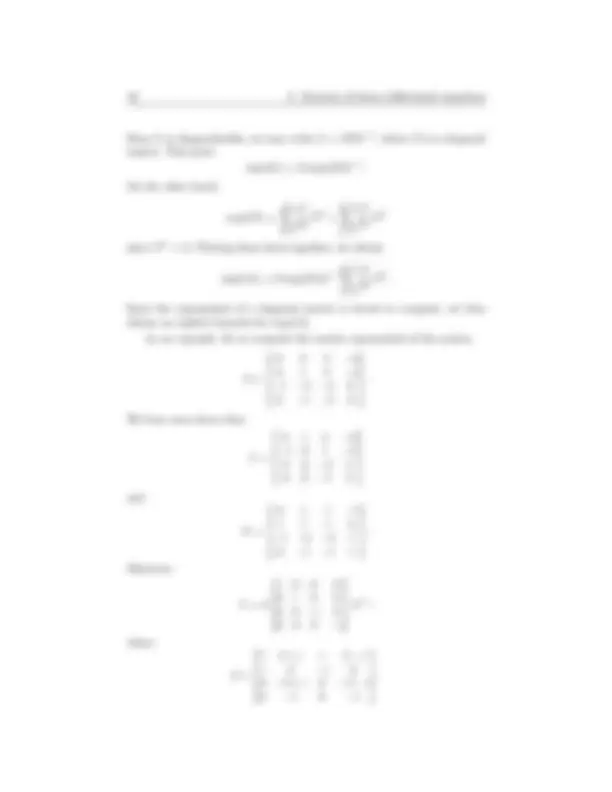
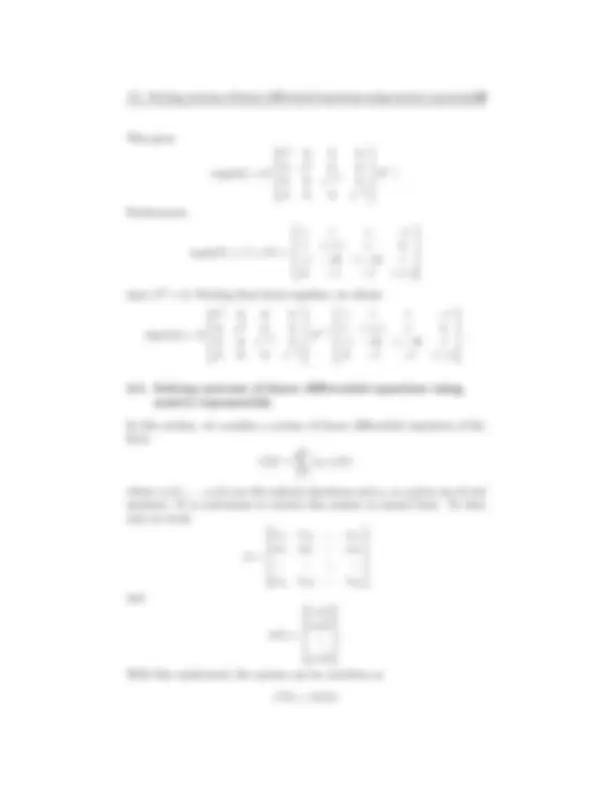
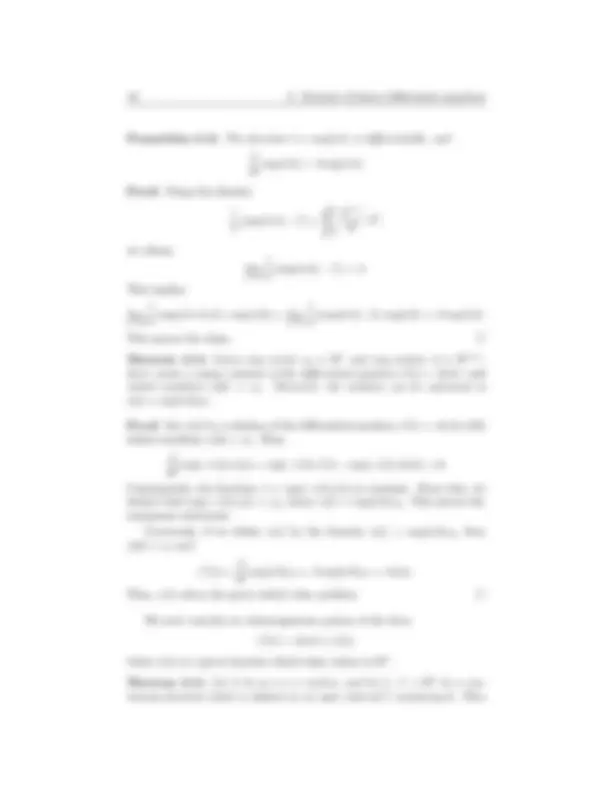
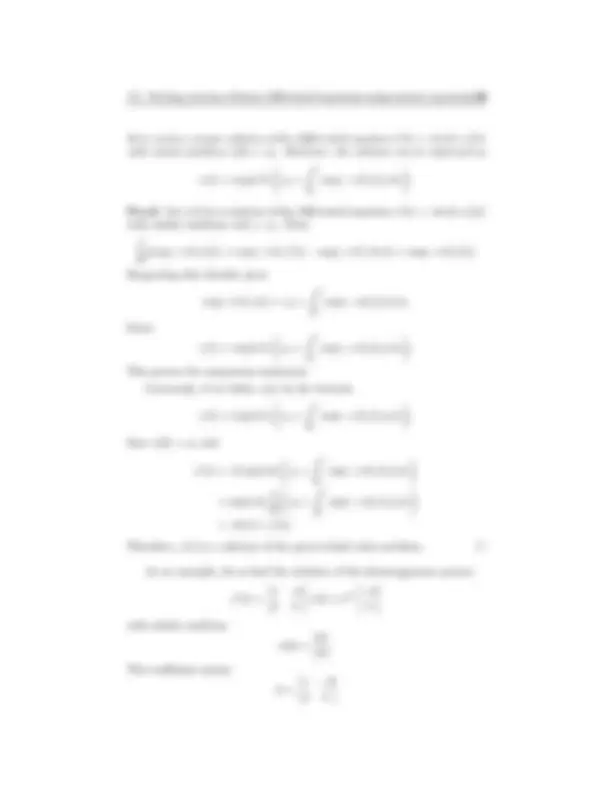
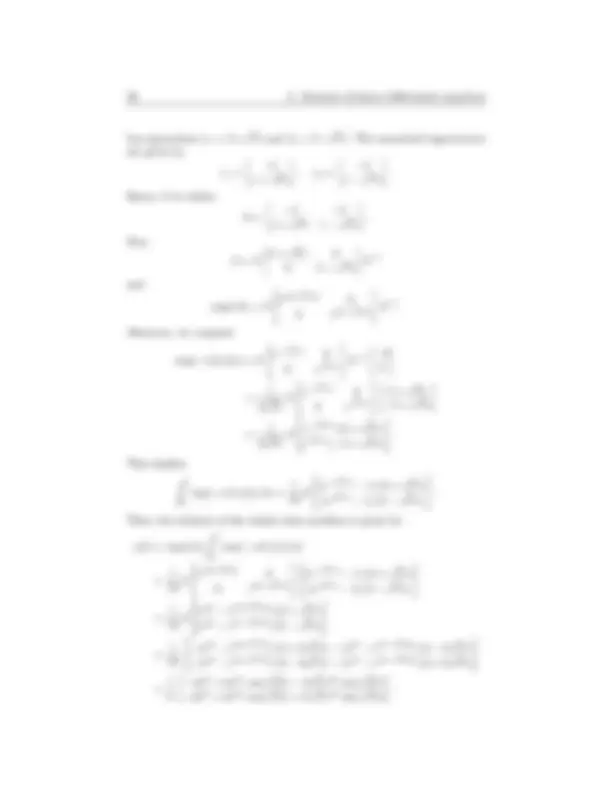
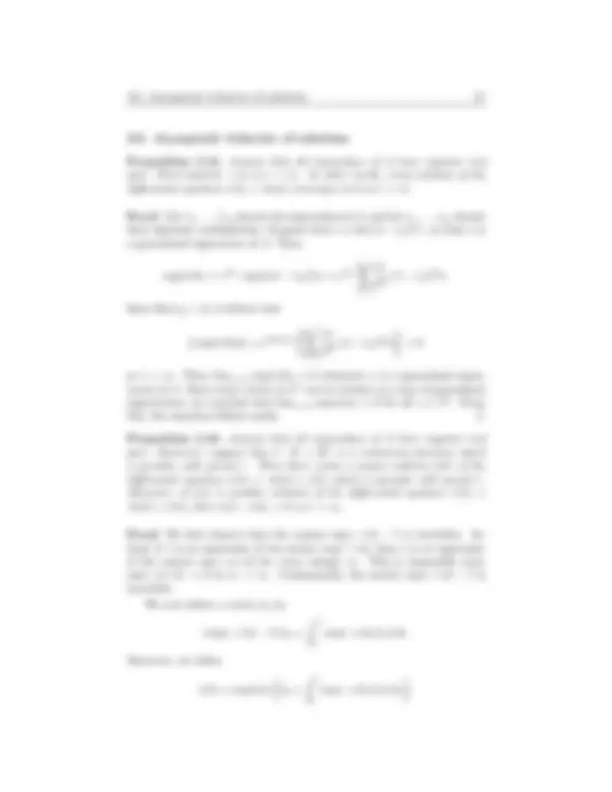
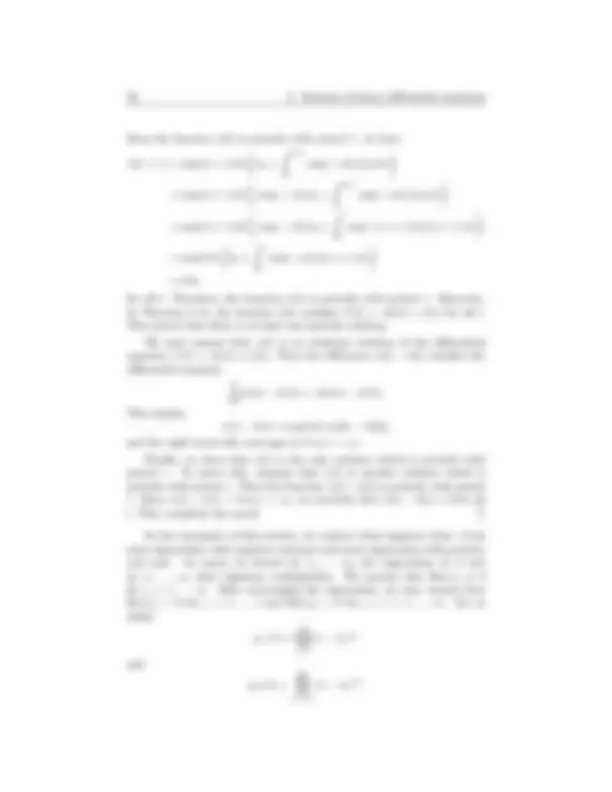
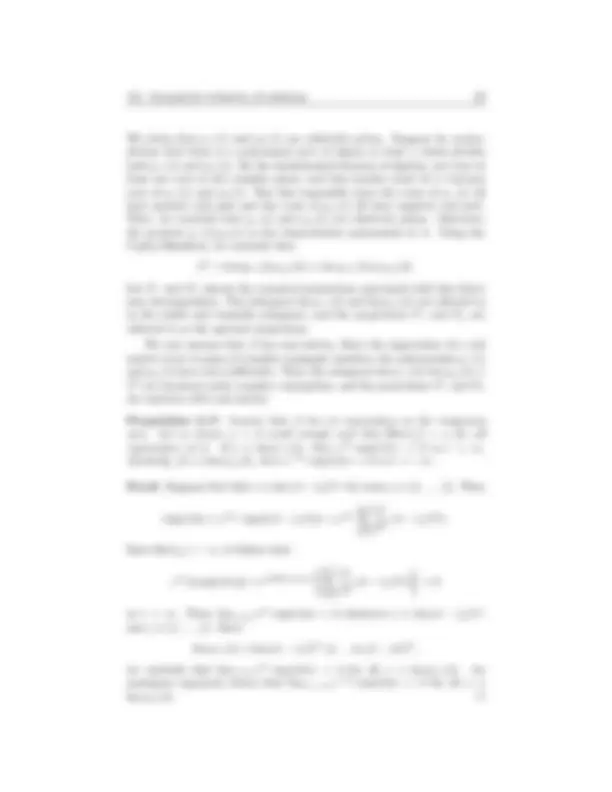
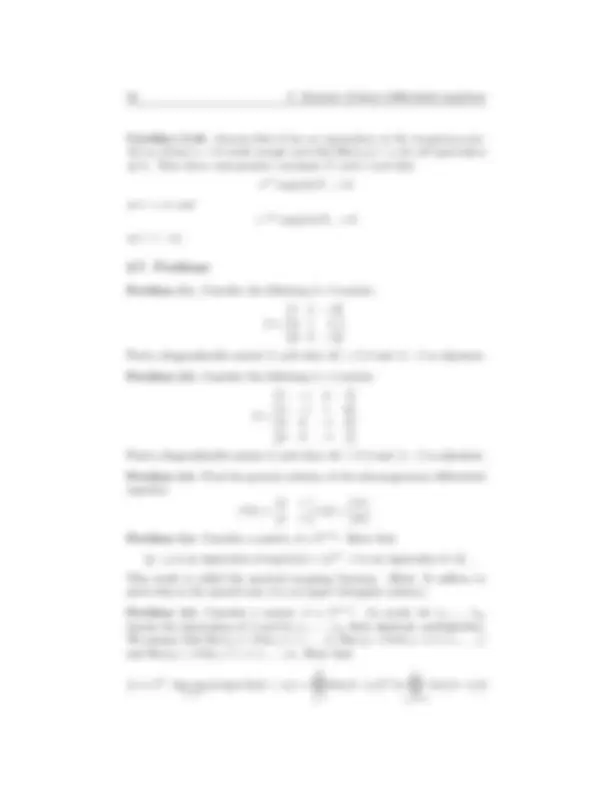


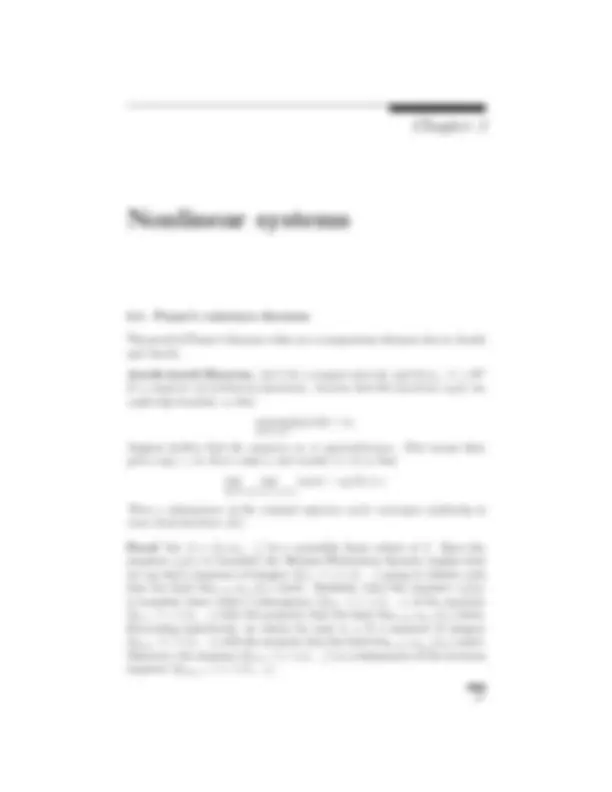
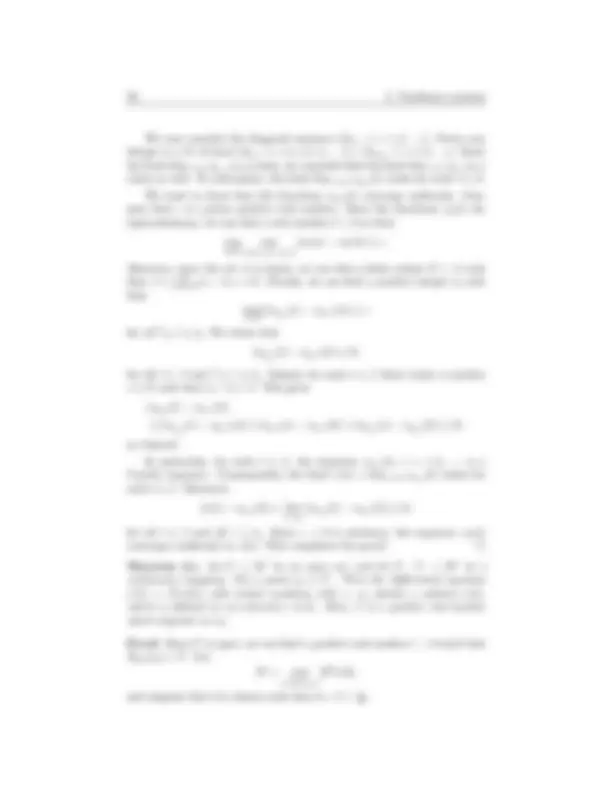
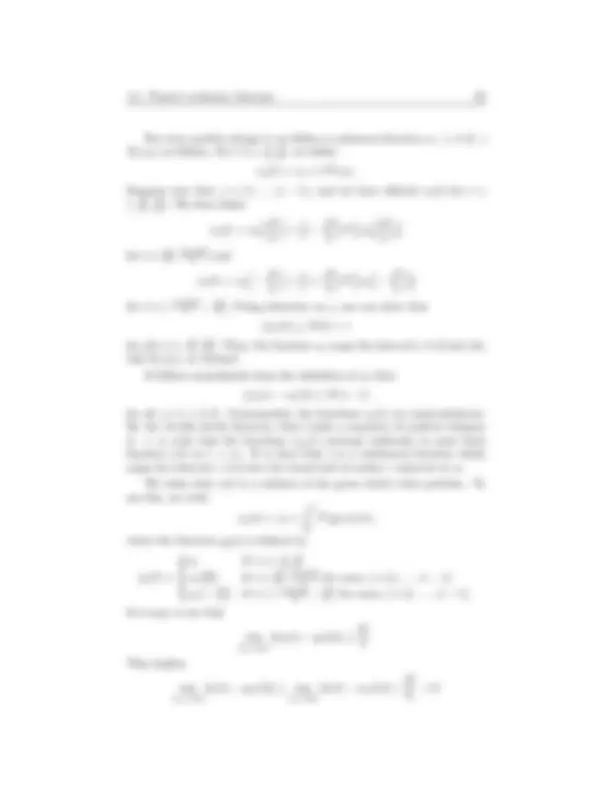
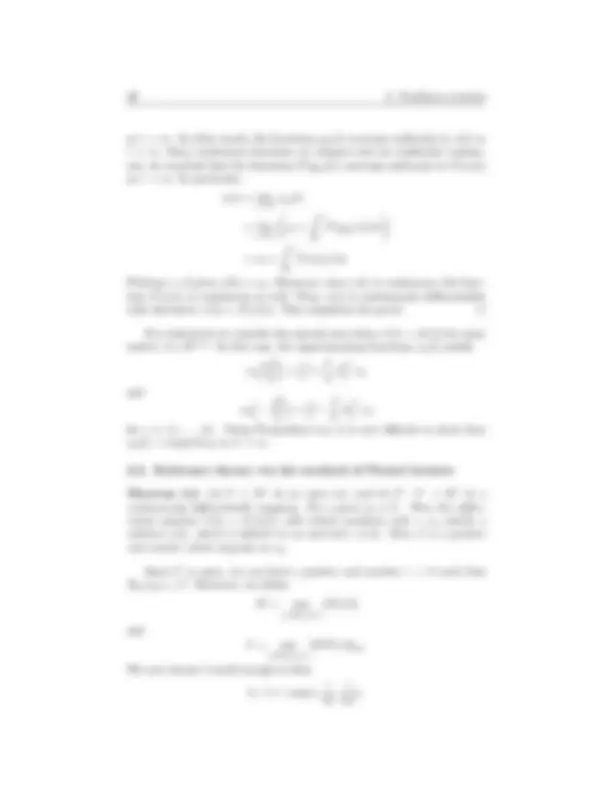
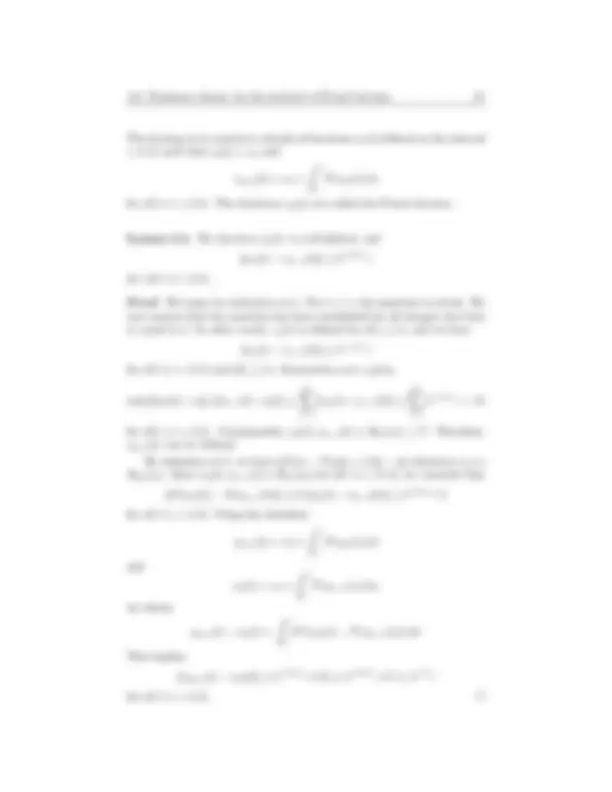
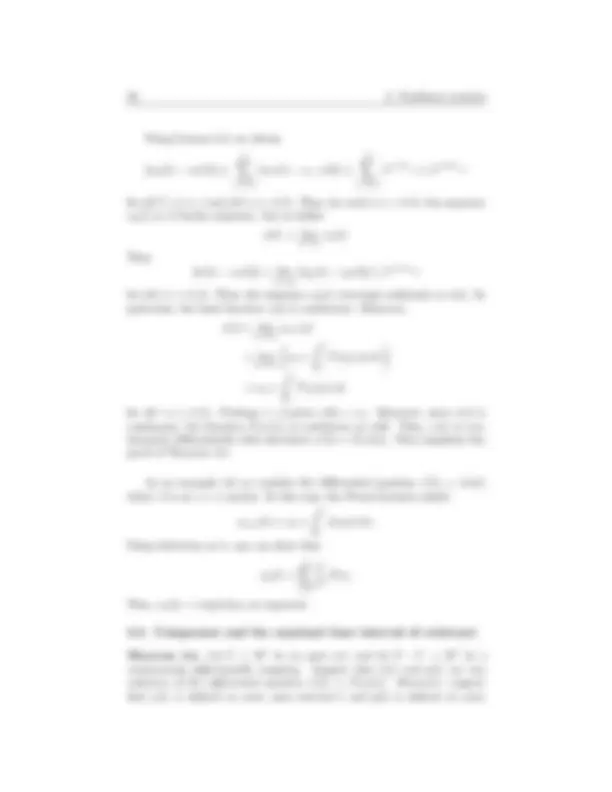
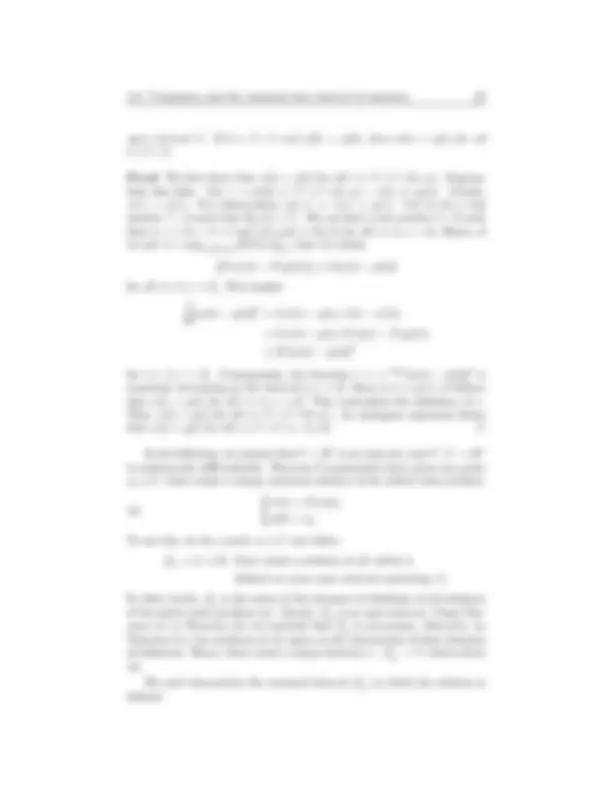
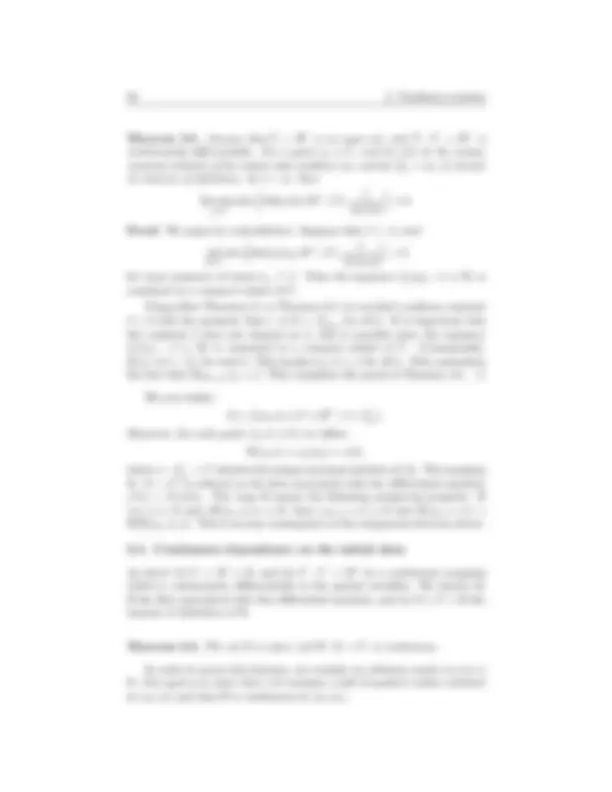
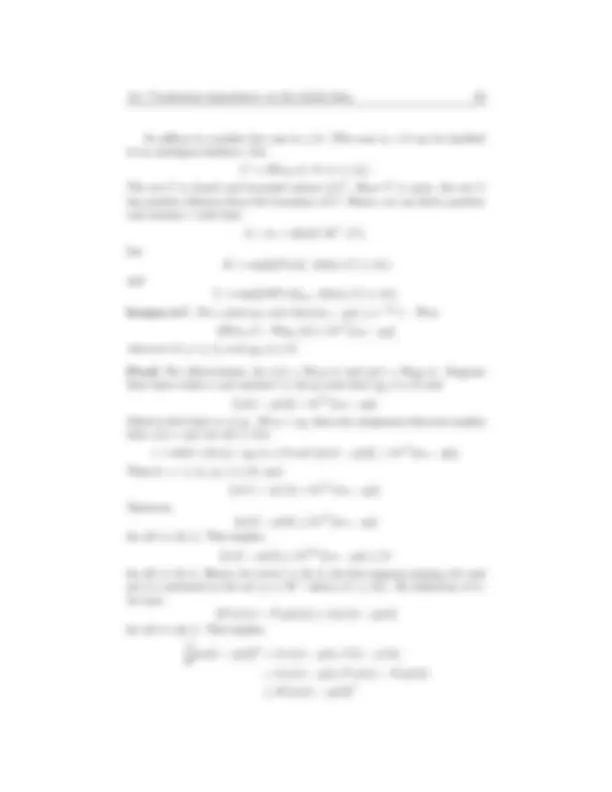
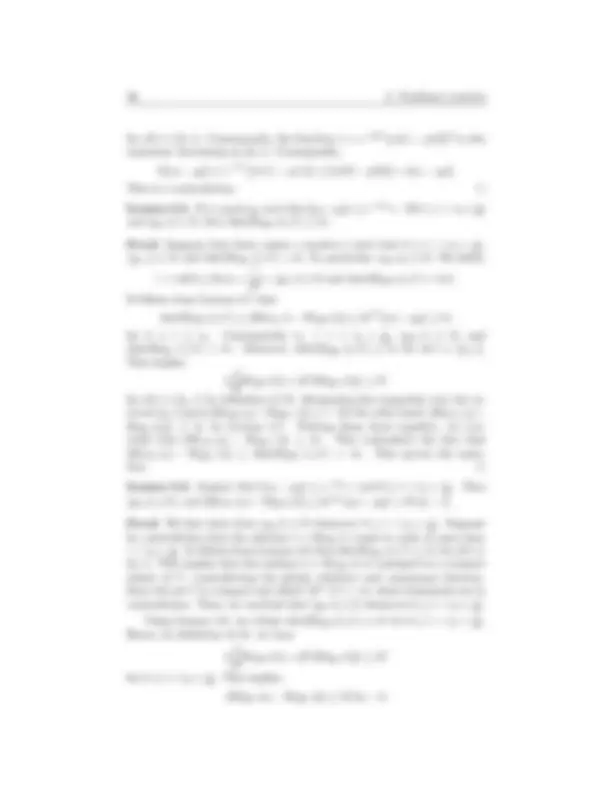
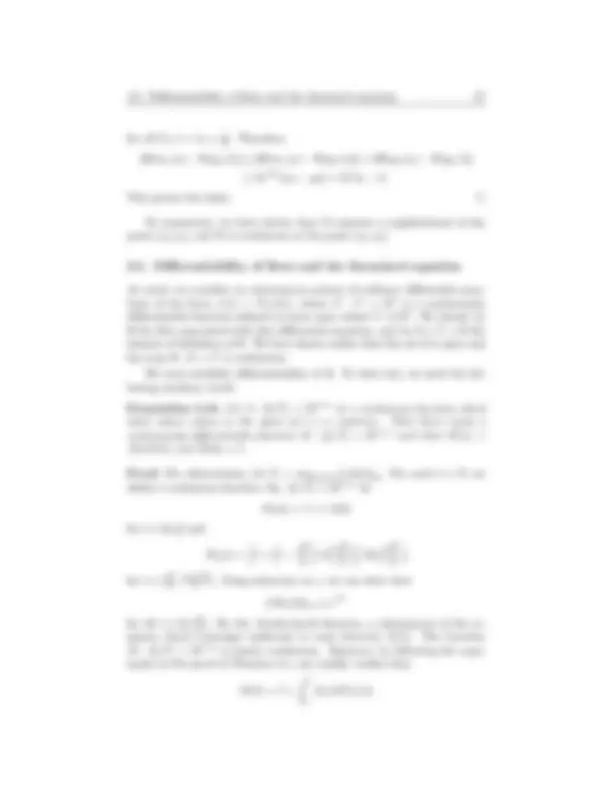
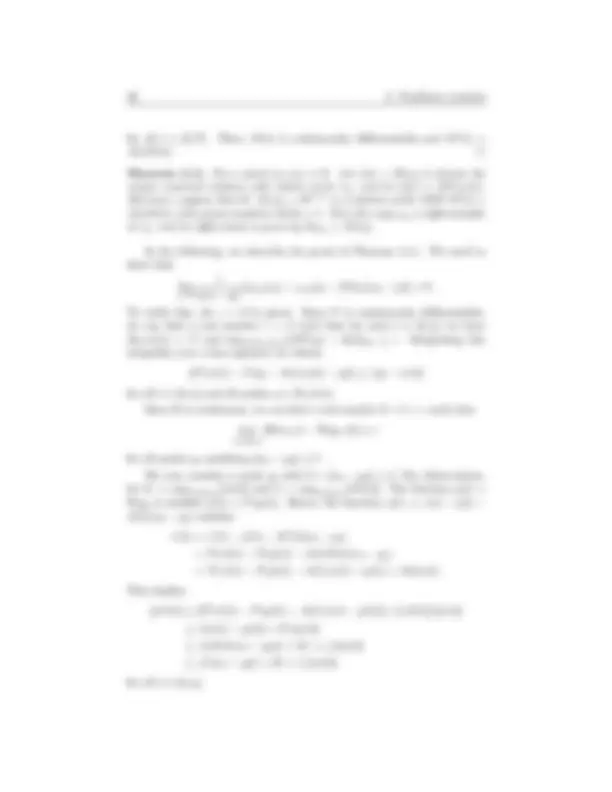
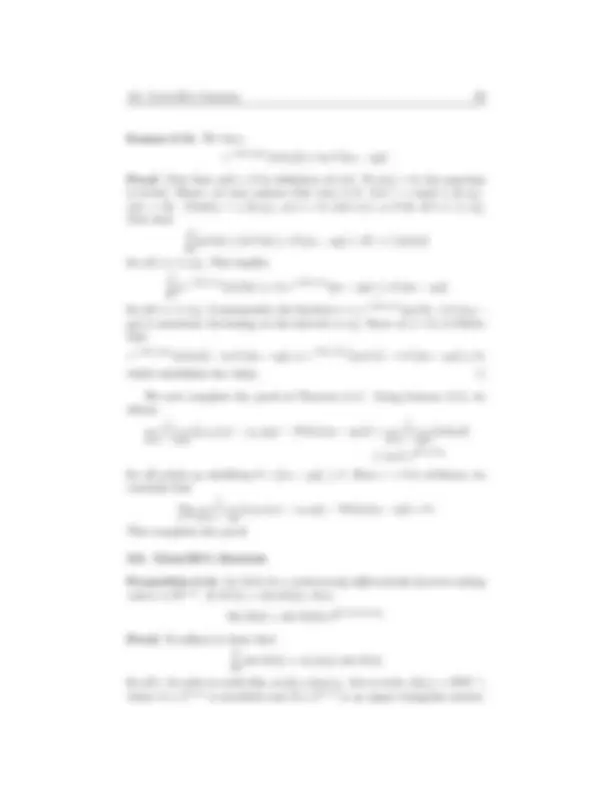
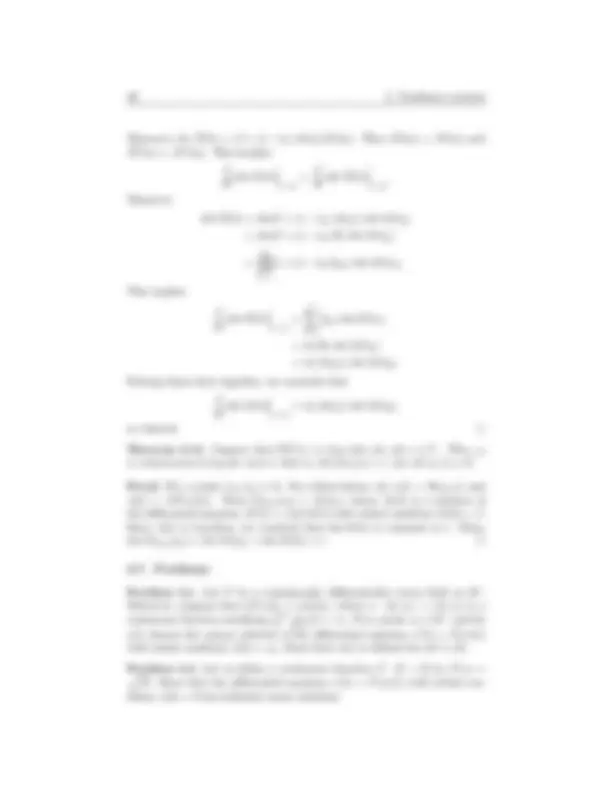


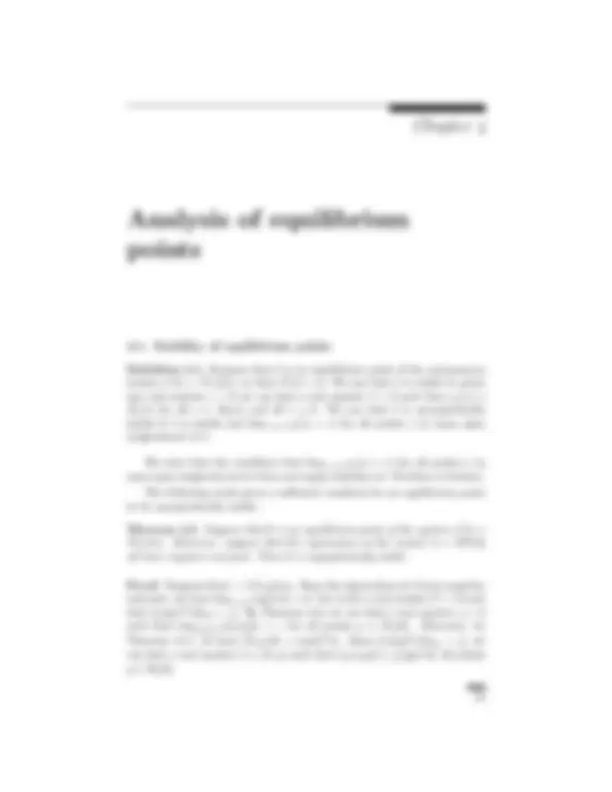
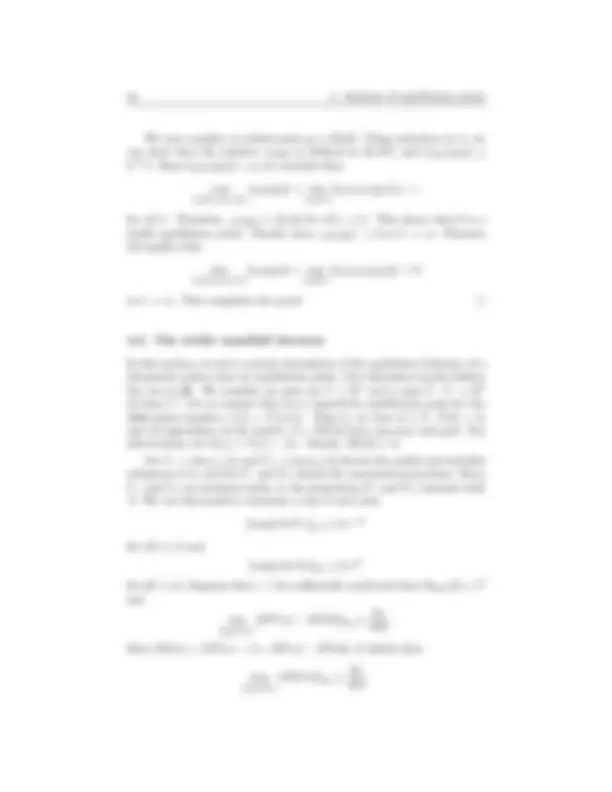
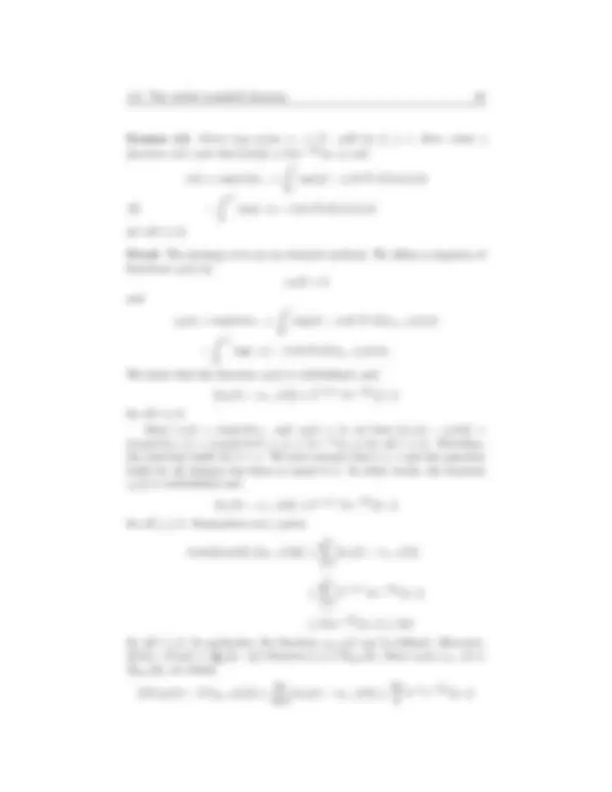
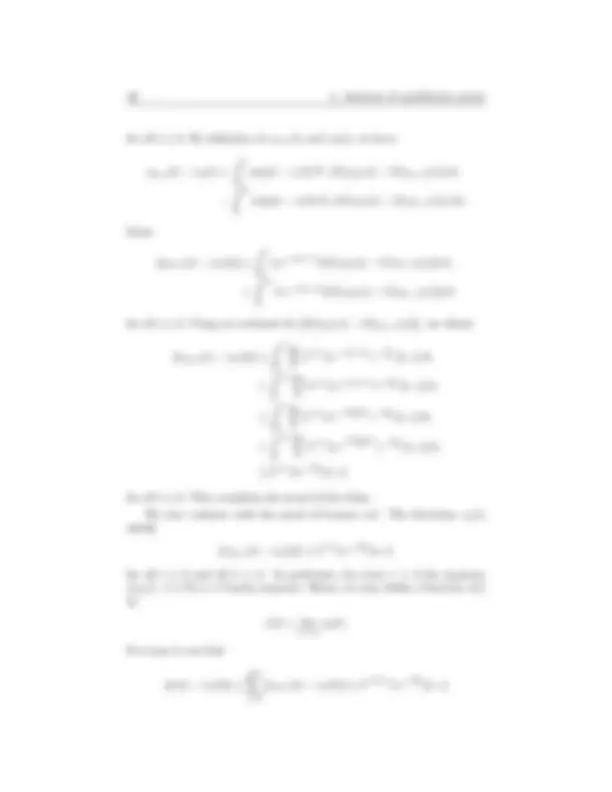
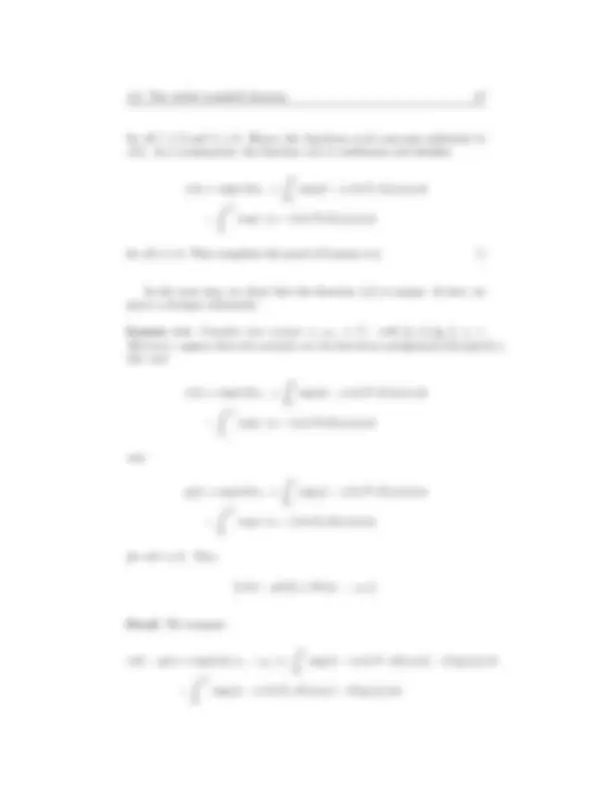
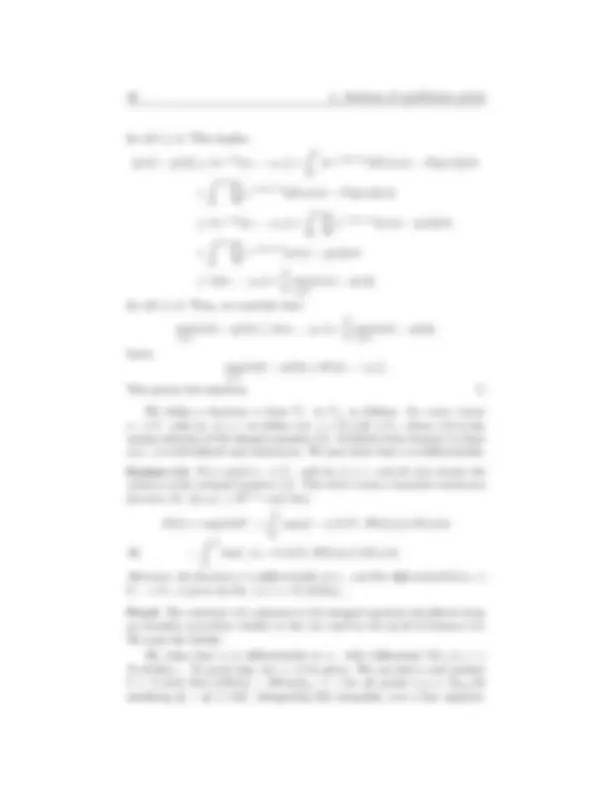
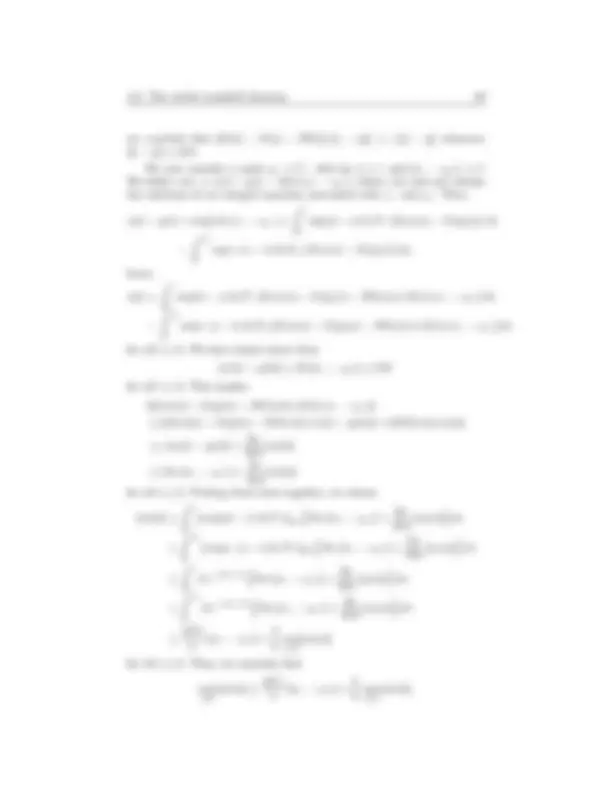
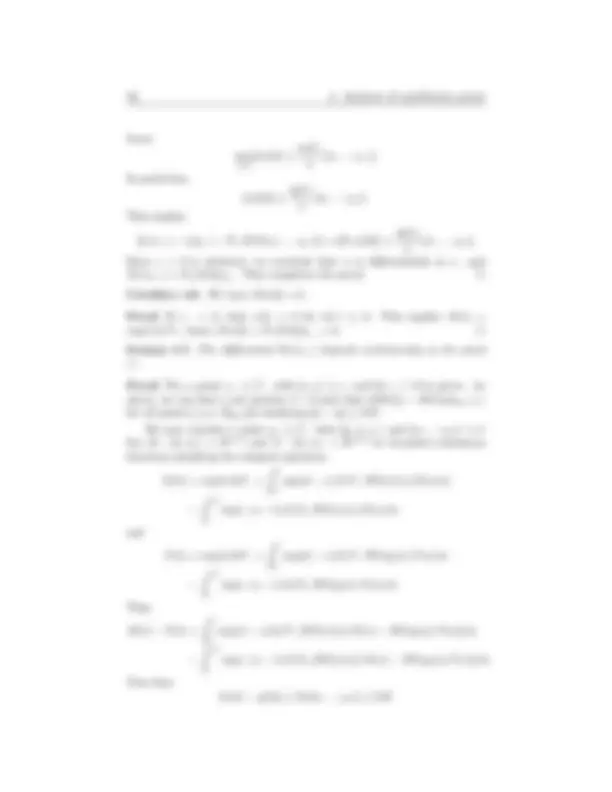
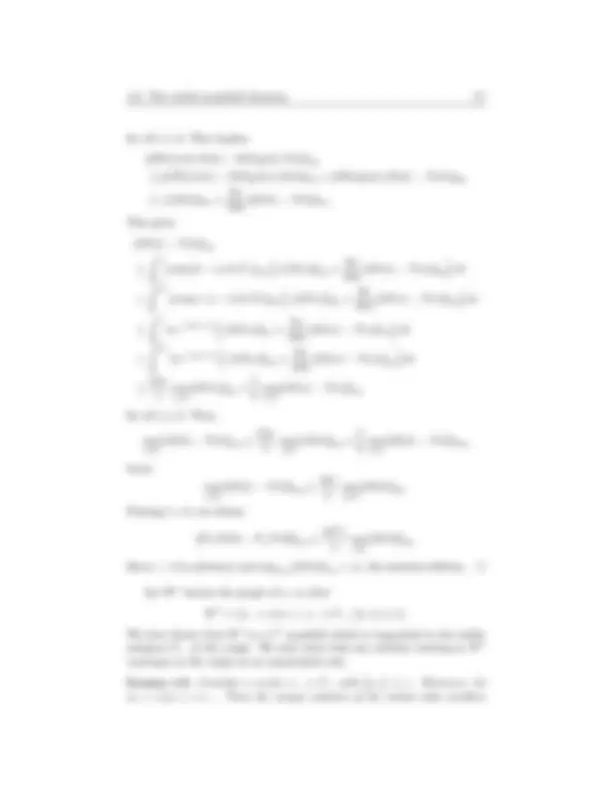
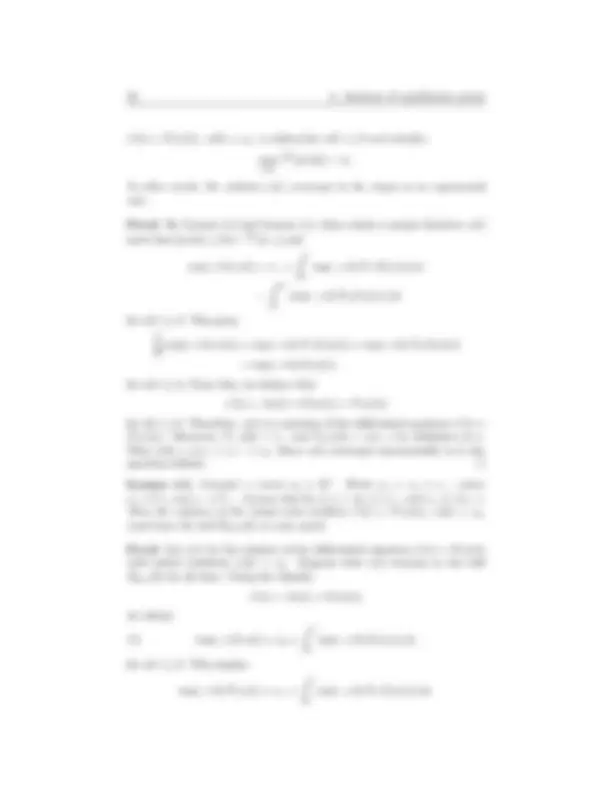
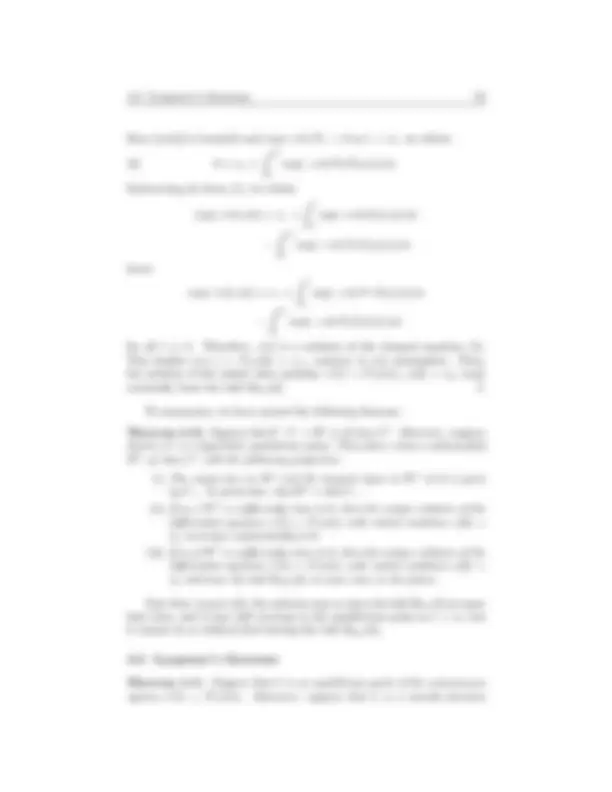
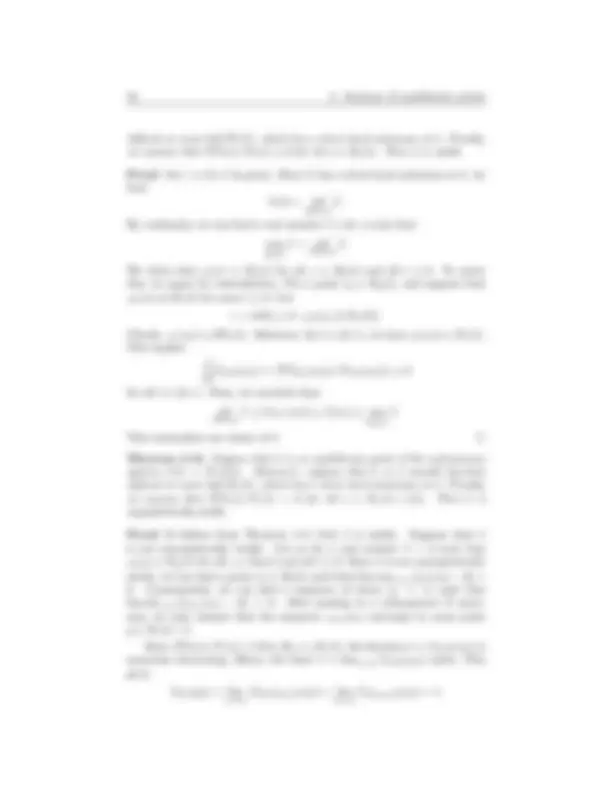
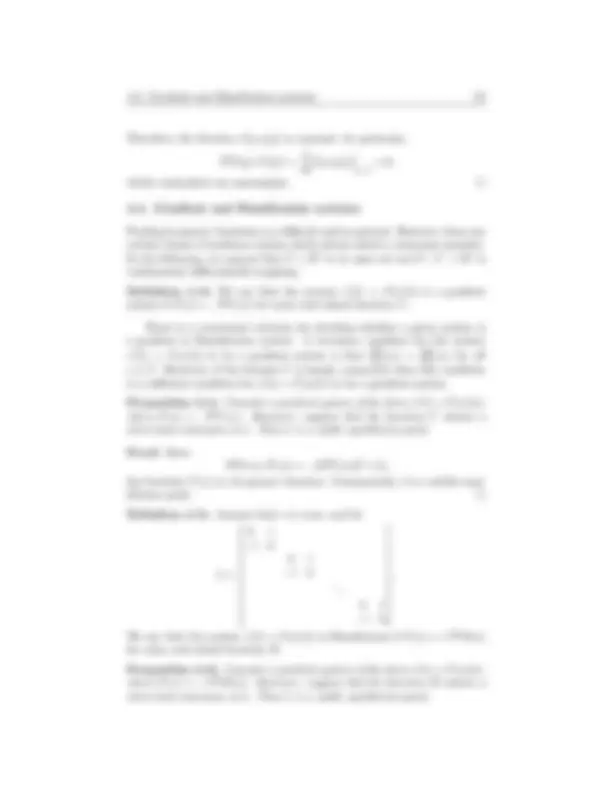
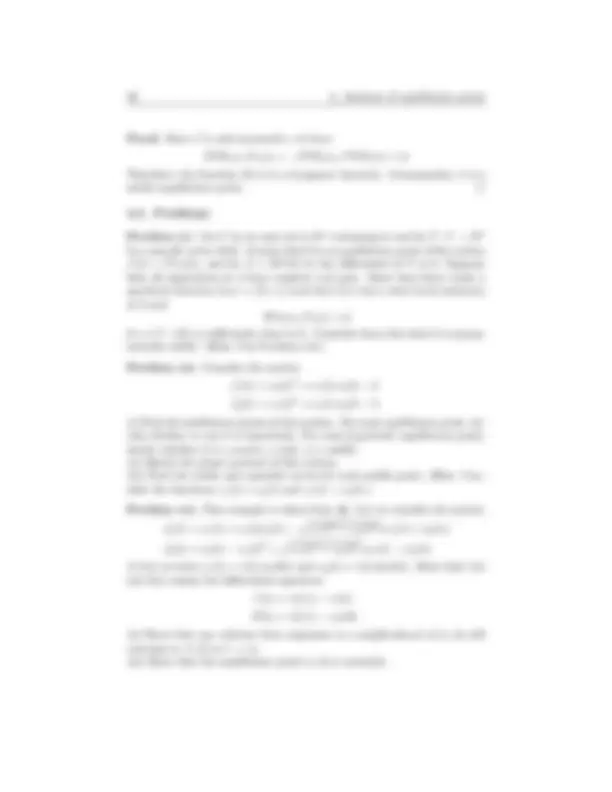
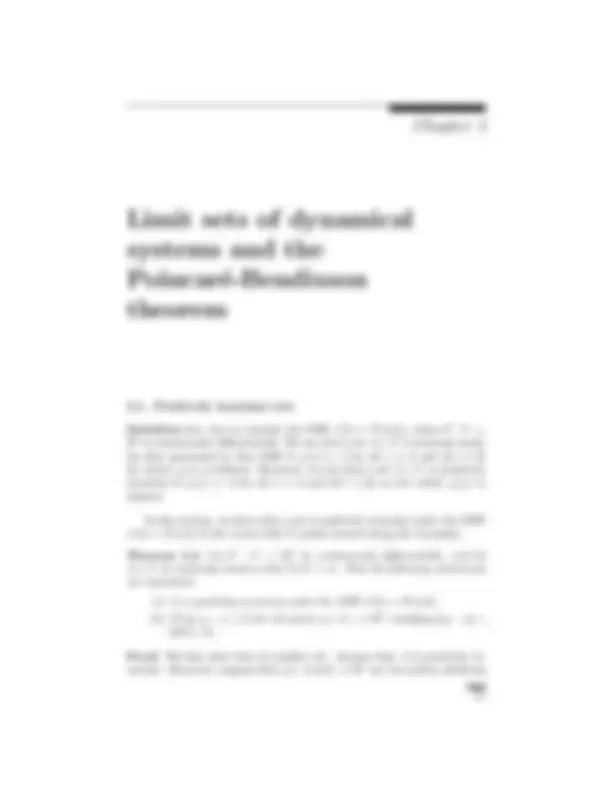
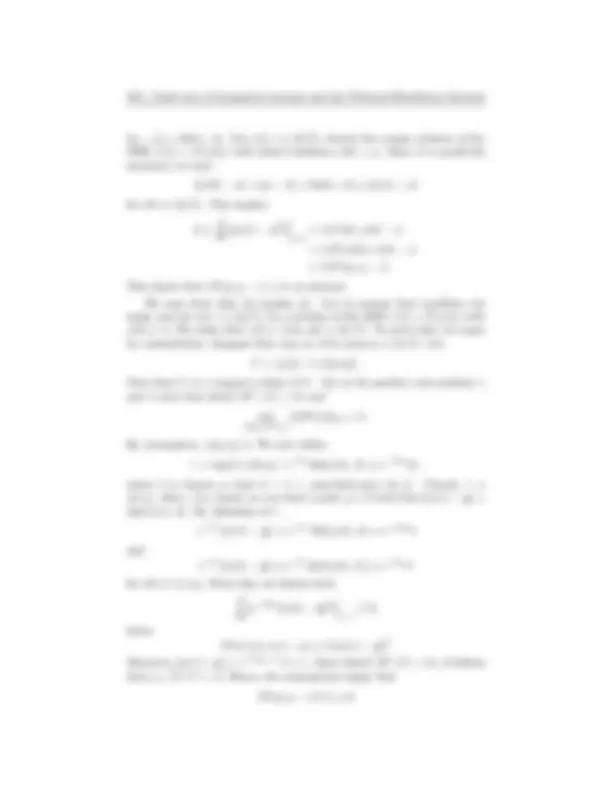
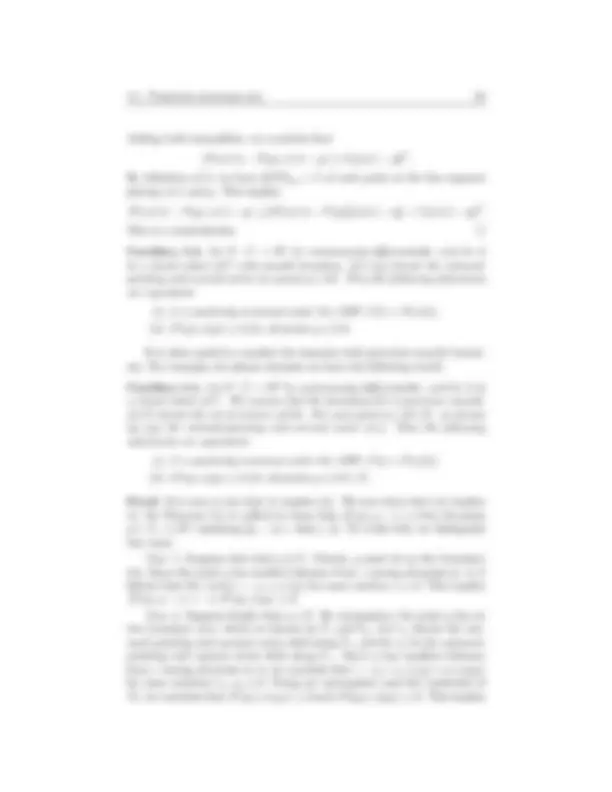
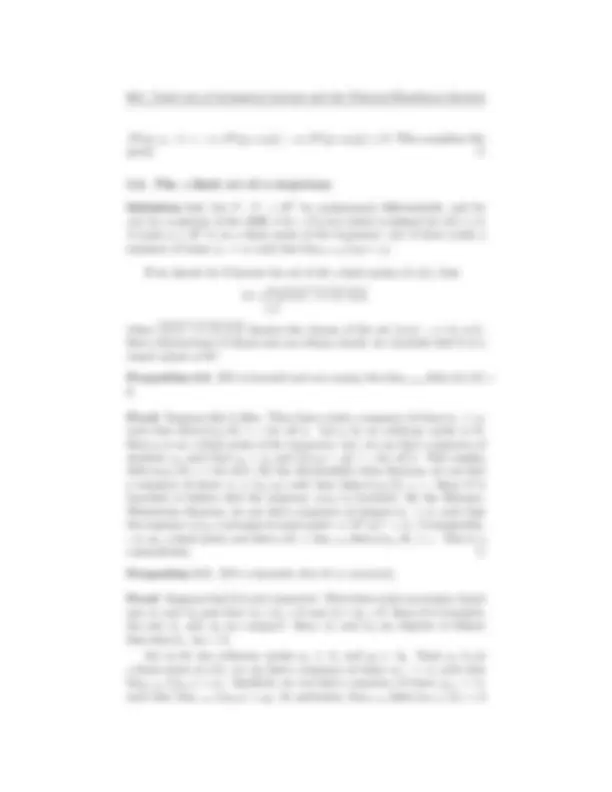
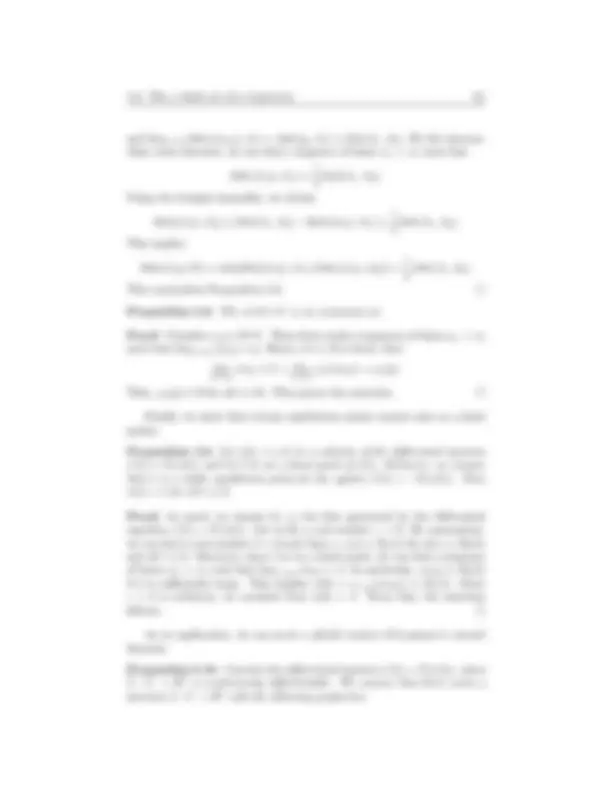
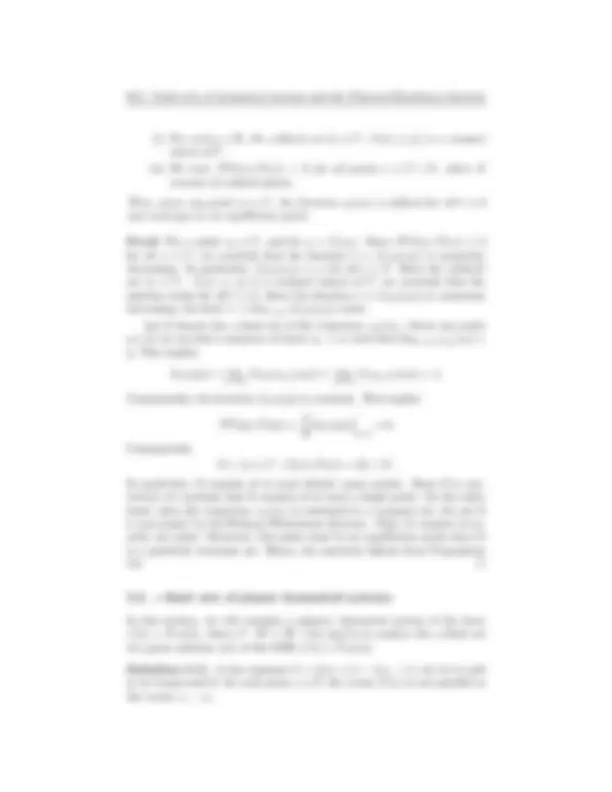



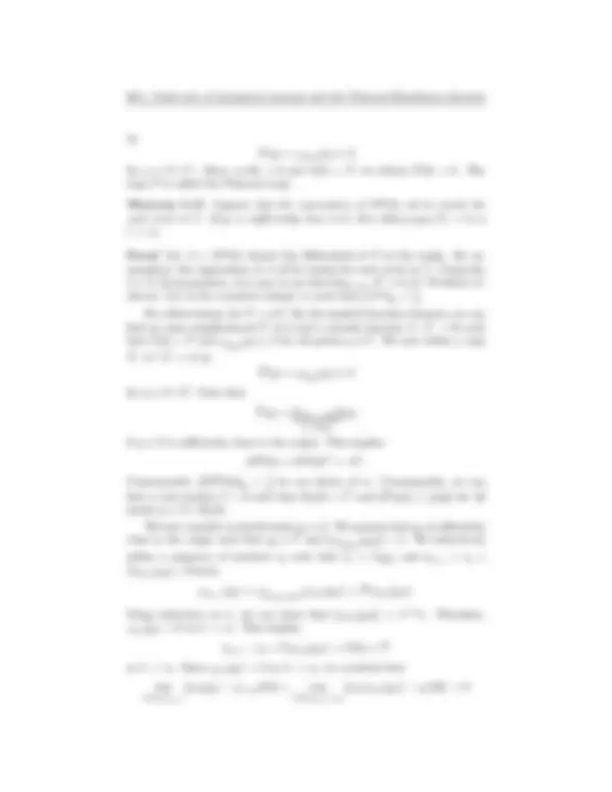
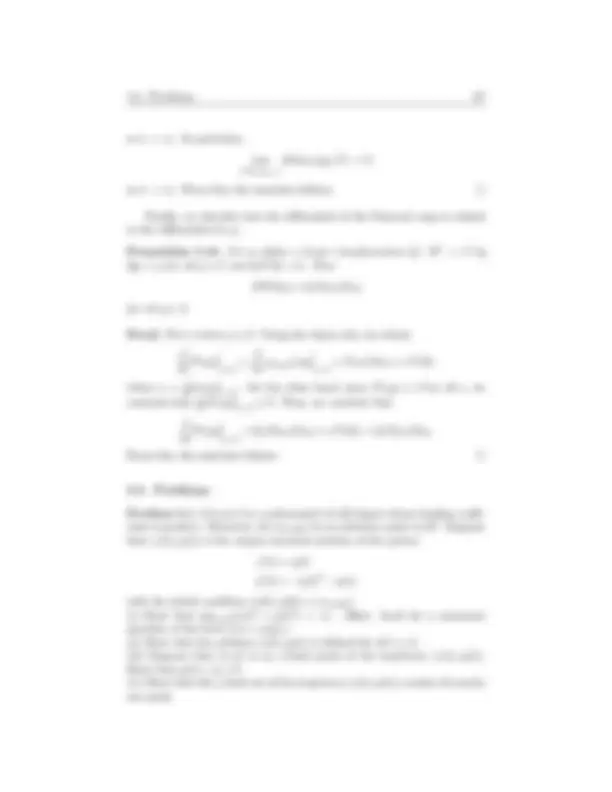
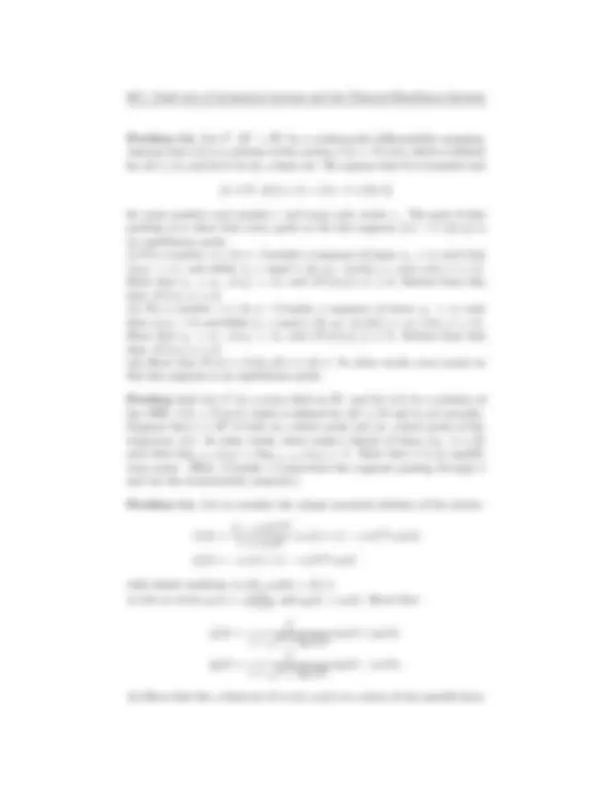


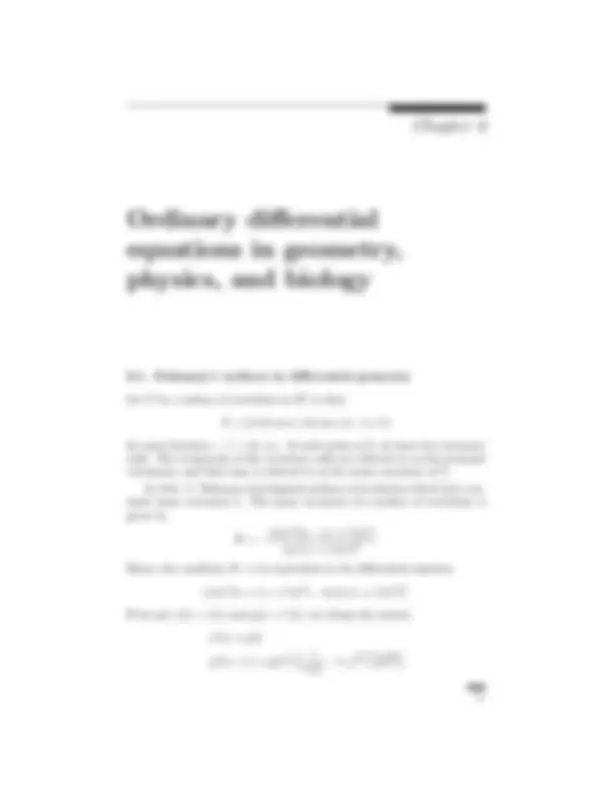

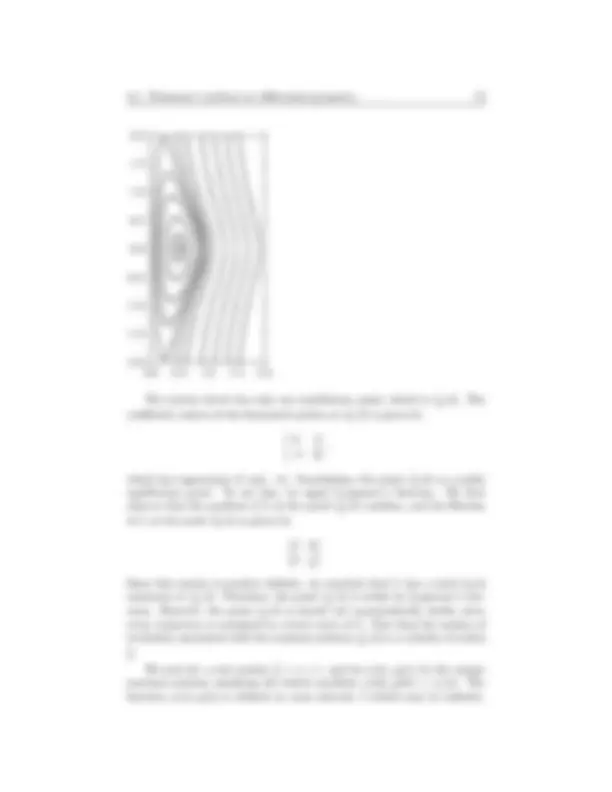
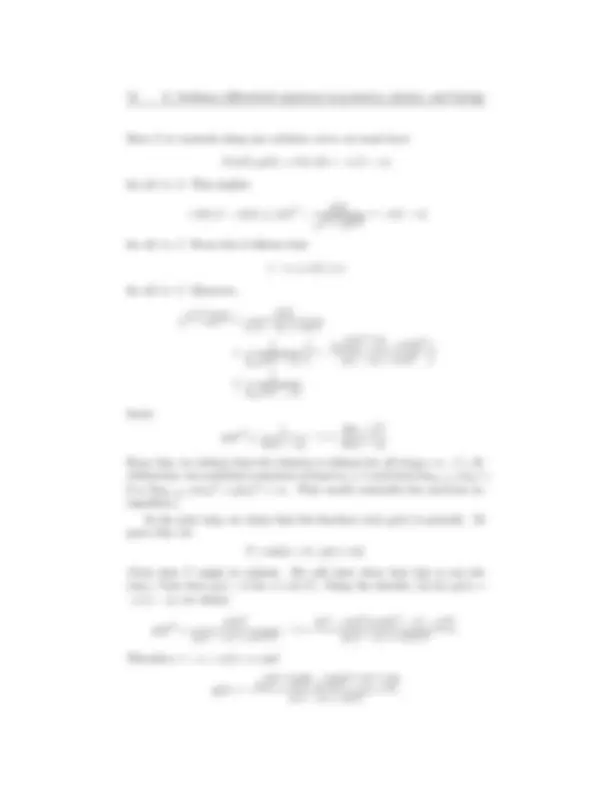
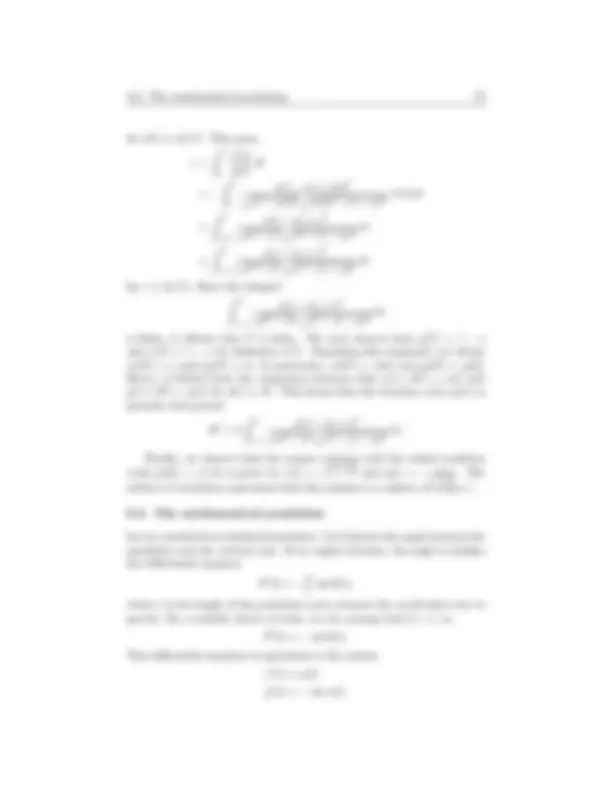
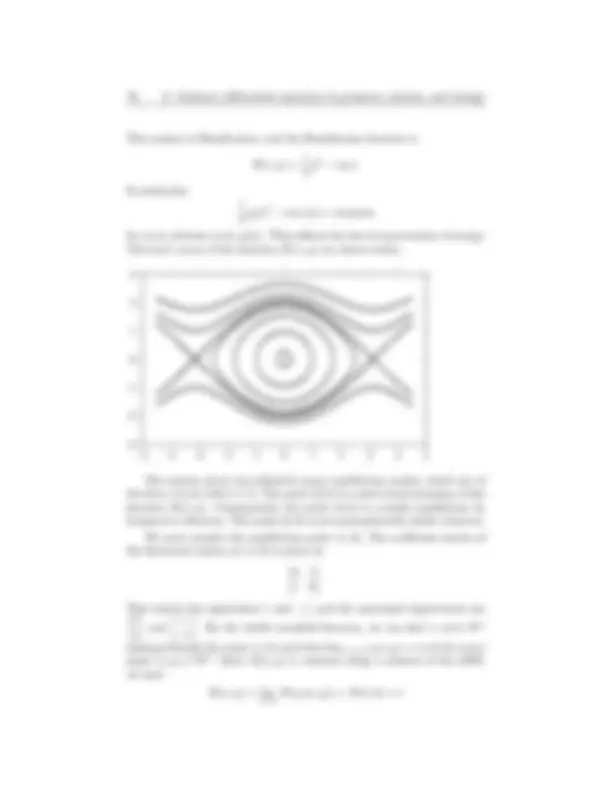
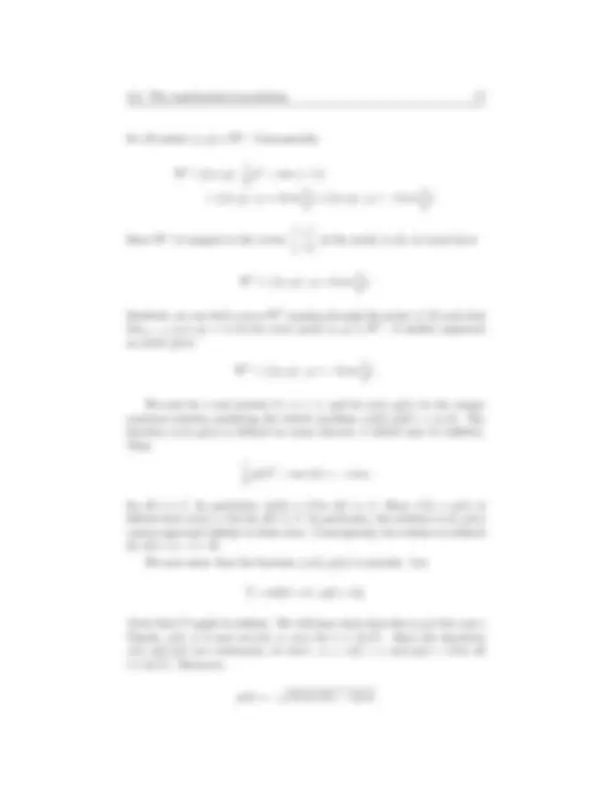
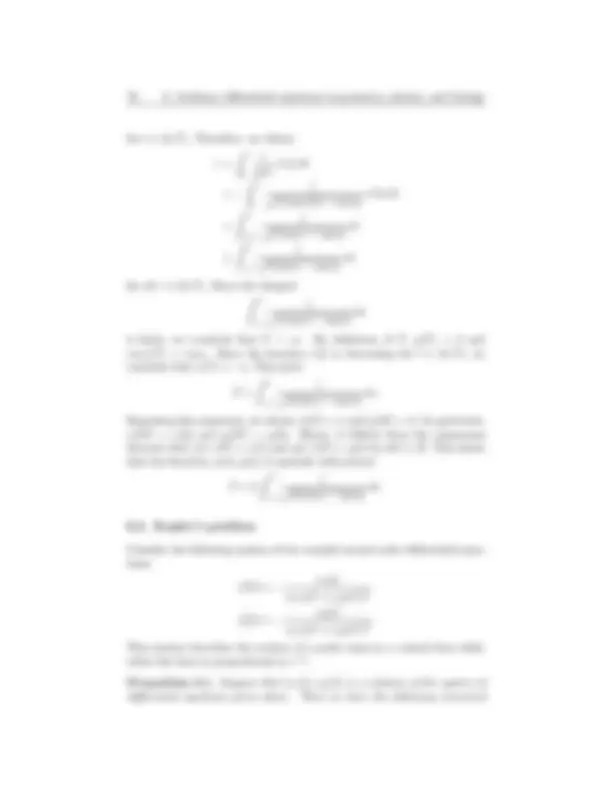

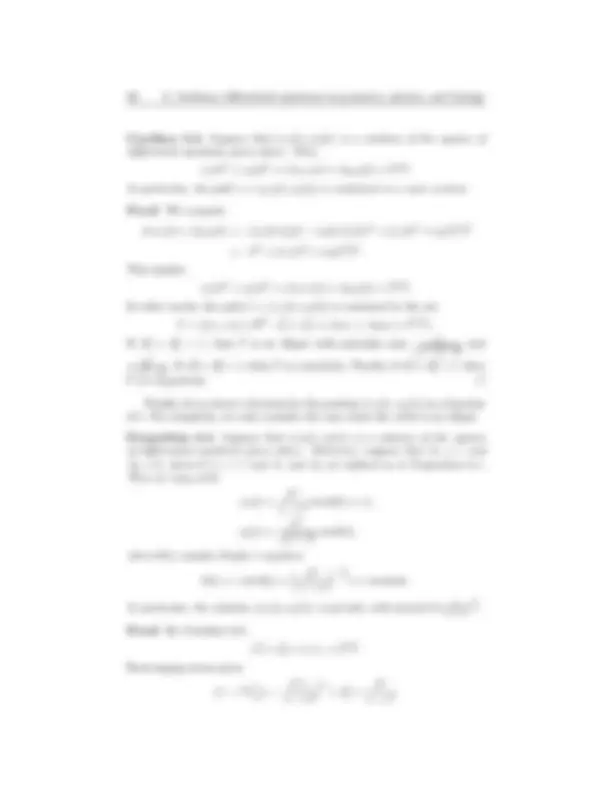
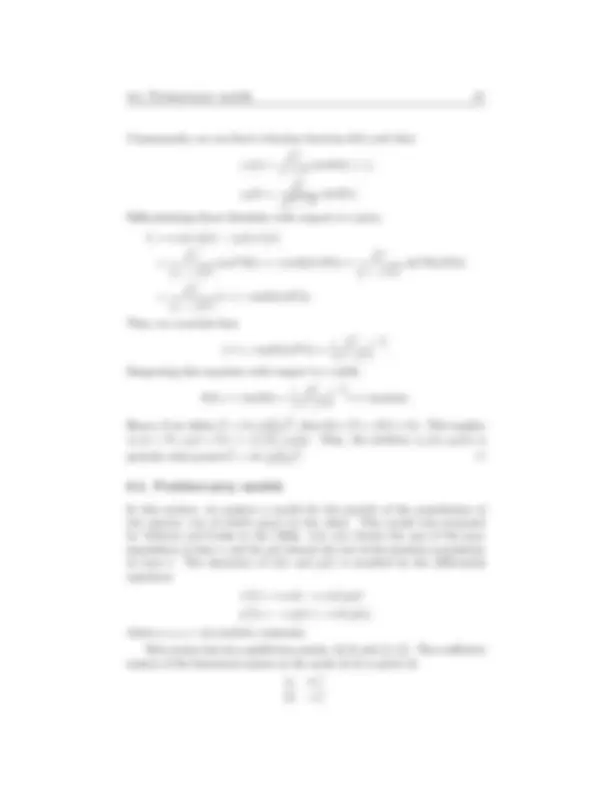
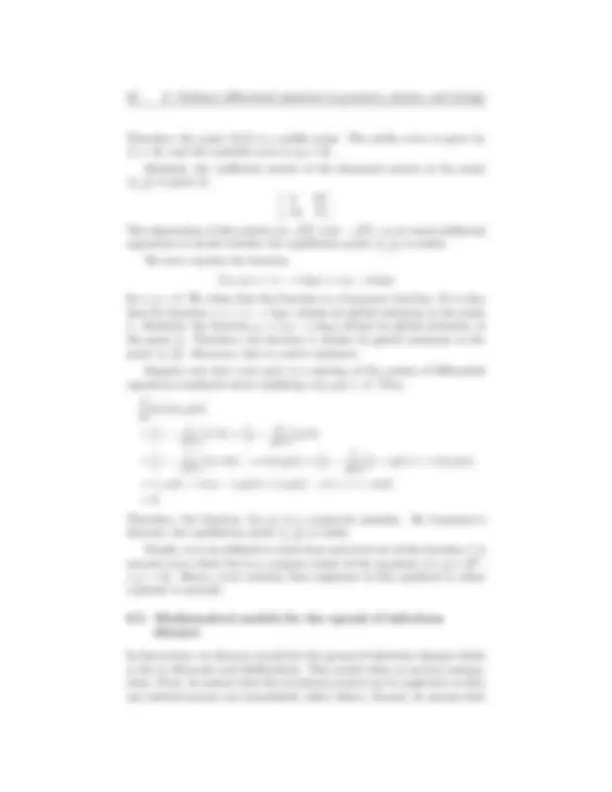
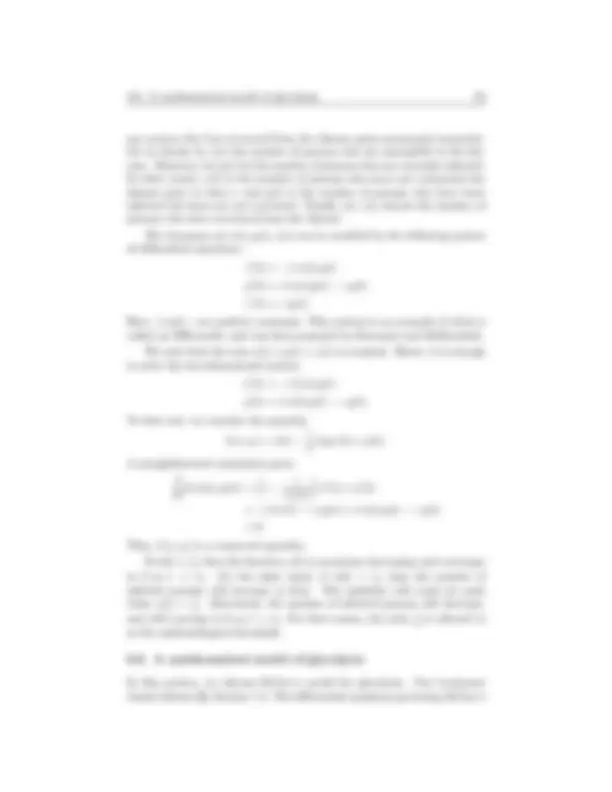
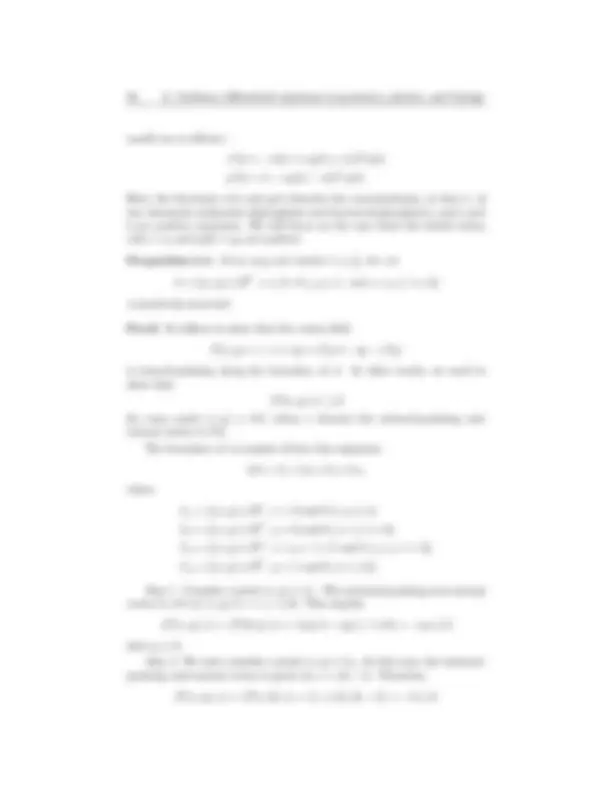
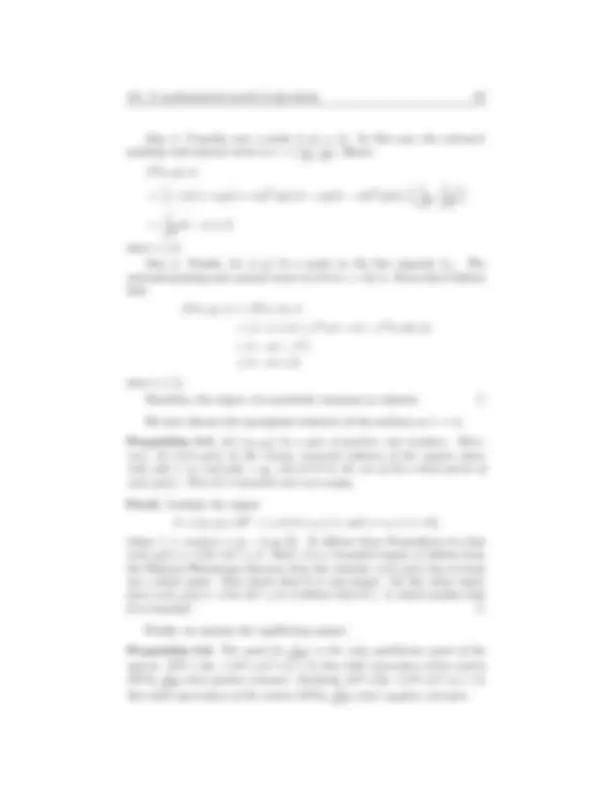
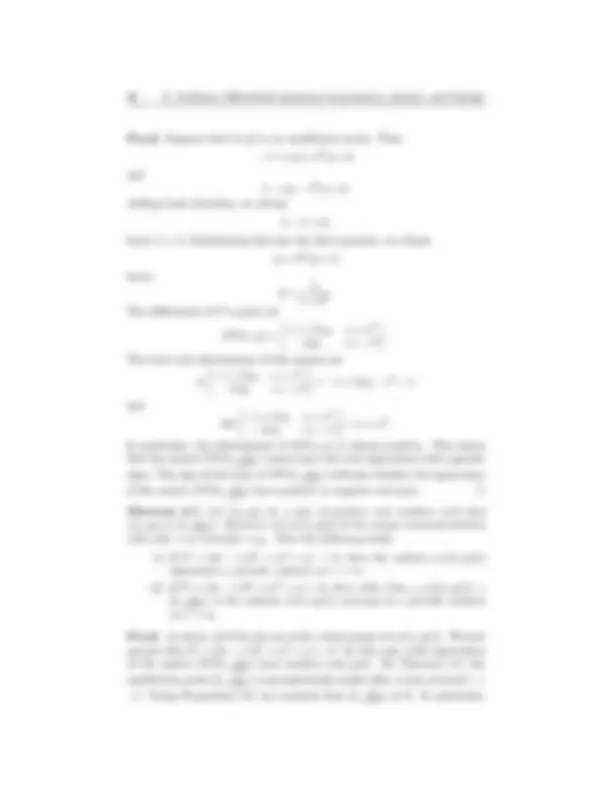
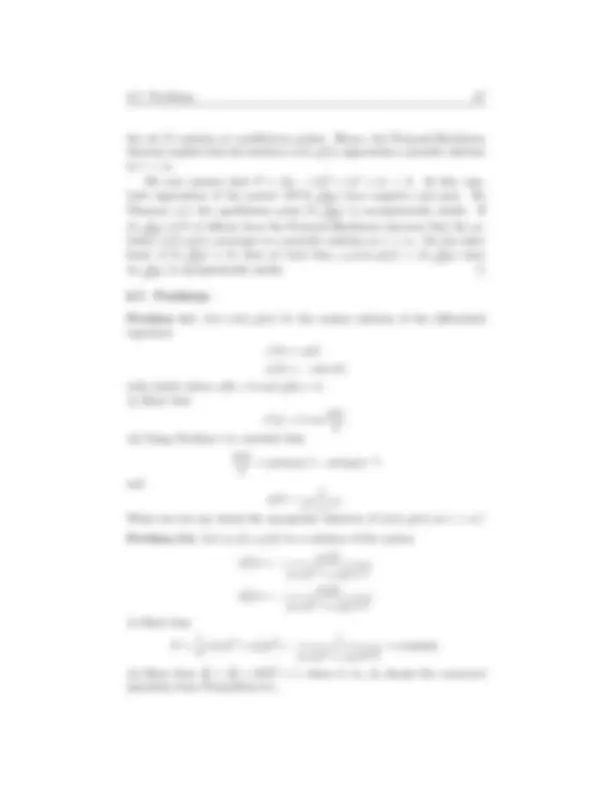



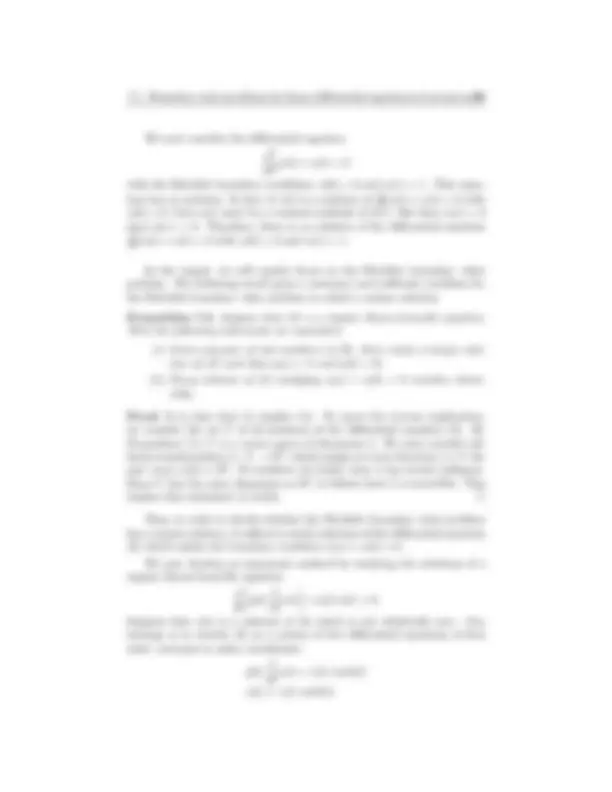
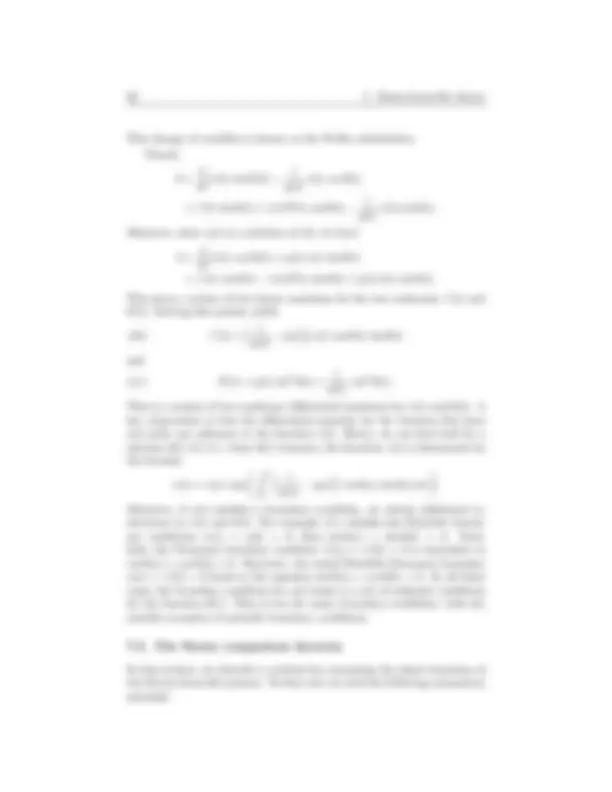
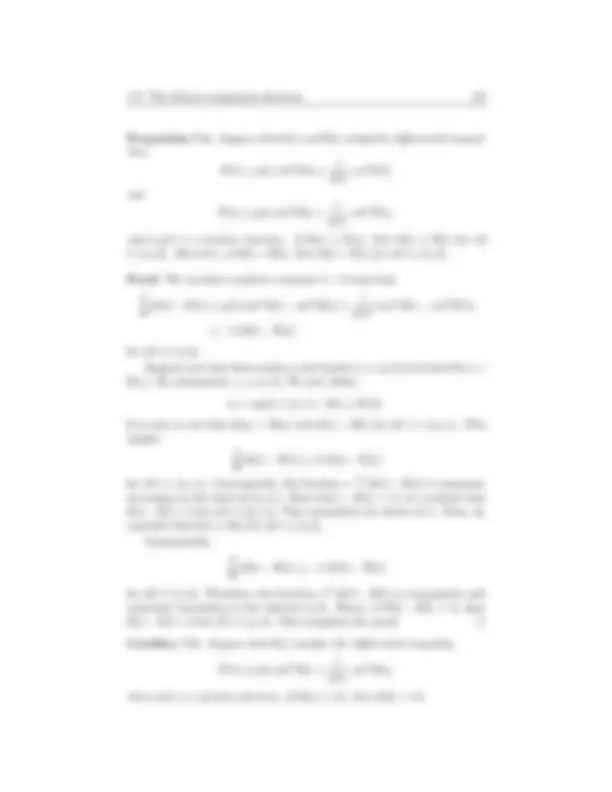
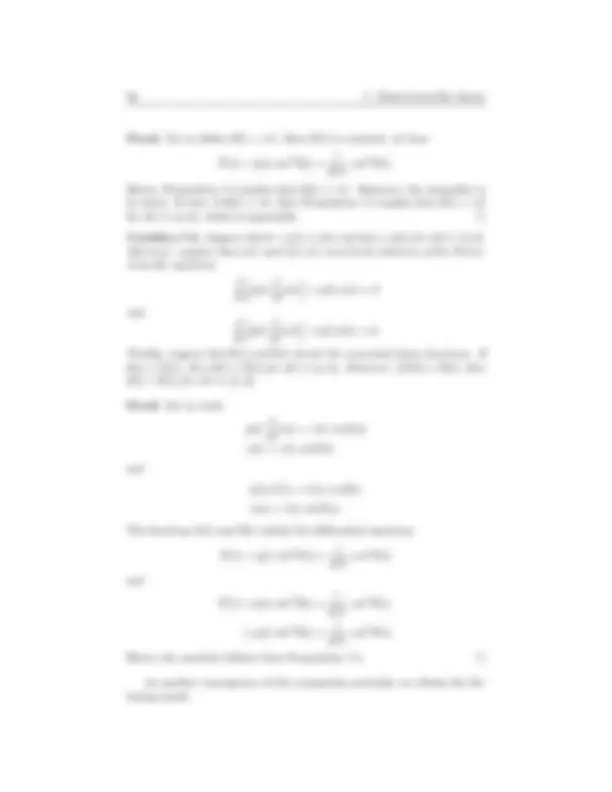


Study with the several resources on Docsity

Earn points by helping other students or get them with a premium plan


Prepare for your exams
Study with the several resources on Docsity

Earn points to download
Earn points by helping other students or get them with a premium plan
Community
Ask the community for help and clear up your study doubts
Discover the best universities in your country according to Docsity users
Free resources
Download our free guides on studying techniques, anxiety management strategies, and thesis advice from Docsity tutors
Solving systems of linear differential equations using matrix exponentials ... These notes grew out of courses taught by the author at Stanford University.
Typology: Lecture notes
1 / 121

This page cannot be seen from the preview
Don't miss anything!





























































































These notes grew out of courses taught by the author at Stanford University
during the period of 2006 – 2009. The material is all classical. The author is
grateful to Messrs. Chad Groft, Michael Eichmair, and Jesse Gell-Redman,
who served as course assistants during that time.
vii
A di↵erential equation is an equation which relates the derivatives of an
unknown function to the unknown function itself and known quantities. We
distinguish two basic types of di↵erential equations: An ordinary di↵erential
equation is a di↵erential equation for an unknown function which depends on
a single variable (usually denoted by t and referred to as time). By contrast,
if the unknown function depends on two or more variables, the equation
is a partial di↵erential equation. In this text, we will restrict ourselves to
ordinary di↵erential equations, as the theory of partial di↵erential equations
is considerably more di�cult.
Perhaps the simplest example of an ordinary di↵erential equation is the
equation
(1) x
0 (t) = a x(t),
where x(t) is a real-valued function and a is a constant. This is an example
of a linear di↵erential equation of first order. Its general solution is described
in the following proposition:
Proposition 1.1. A function x(t) is a solution of (1) if and only if x(t) =
c e
at for some constant c.
Proof. Let x(t) be an arbitrary solution of (1). Then
d
dt
(e
�at x(t)) = e
�at (x
0 (t) � a x(t)) = 0.
2 1. Introduction
Therefore, the function e
�at x(t) is constant. Consequently, x(t) = c e
at for
some constant c.
Conversely, suppose that x(t) is a function of the form x(t) = c e
at for
some constant c. Then x
0 (t) = ca e
at = a x(t). Therefore, any function of
the form x(t) = c e at^ is a solution of (1). ⇤
We now consider a more general situation. Specifically, we consider the
di↵erential equation
(2) x
0 (t) = a(t) x(t) + f (t).
Here, a(t) and f (t) are given continuous functions which are defined on some
interval J ⇢ R. Like (1), the equation (2) is a linear di↵erential equation
of first order. However, while the equation (1) has constant coe�cients,
coe�cients in the equation (2) are allowed to depend on t. In the following
proposition, we describe the general solution of (2):
Proposition 1.2. Fix a time t 0 2 J, and let '(t) =
R (^) t
t (^0)
a(s) ds. Then a
function x(t) is a solution of (2) if and only if
x(t) = e
'(t)
✓ Z (^) t
t (^0)
e
�'(s) f (s) ds + c
for some constant c.
Proof. Let x(t) be an arbitrary solution of (2). Then
d
dt
(e
�'(t) x(t)) = e
�'(t) (x
0 (t) � '
0 (t) x(t))
= e
�'(t) (x
0 (t) � a(t) x(t))
= e
�'(t) f (t).
Integrating this identity, we obtain
e
�'(t) x(t) =
Z (^) t
t (^0)
e
�'(s) f (s) ds + c
for some constant c. This implies
x(t) = e
'(t)
t
t (^0)
e
�'(s) f (s) ds + c
for some constant c.
Conversely, suppose that x(t) is of the form
x(t) = e
'(t)
t
t (^0)
e
�'(s) f (s) ds + c
4 1. Introduction
To solve this equation, we observe that
1 1+x 2
dx = arctan(x). Hence, if
x(t) is a solution of the given di↵erential equation, then
d
dt
arctan(x(t)) =
1 + x(t)
2
x
0 (t) = t.
Integrating this equation, we obtain
arctan(x(t)) =
t
2
for some constant c. Thus, we conclude that
x(t) = tan
t
2
Problem 1.1. Find the solution of the di↵erential equation x
0 (t) = �
2 t 1+t 2
x(t)+
1 with initial condition x(0) = 1.
Problem 1.2. Find the solution of the di↵erential equation x
0 (t) =
t t+
y(t)+
1 with initial condition x(0) = 0.
Problem 1.3. Find the general solution of the di↵erential equation x
0 (t) =
x(t) (1 � x(t)). This di↵erential is related to the logistic growth model.
Problem 1.4. Find the general solution of the di↵erential equation x
0 (t) =
x(t) log
1 x(t)
. This equation describes the Gompertz growth model.
Problem 1.5. Let x(t) be the solution of the di↵erential equation x
0 (t) =
cos x(t) with initial condition x(0) = 0.
(i) Using separation of variables, show that
log(1 + sin x(t)) � log(1 � sin x(t)) = 2t.
(Hint: Write
2 cos x
cos x 1+sin x
cos x 1 �sin x
(ii) Show that
x(t) = arcsin
e
t � e
�t
e t^ + e �t
= arctan(e
t ) � arctan(e
�t ).
Let A 2 C
n⇥n be an n ⇥ n matrix. The operator norm of A is defined by
kAk (^) op = sup x 2 C n^ , kxk 1
kAxk.
It is straightforward to verify that the operator norm is submultiplicative;
that is,
kABkop kAkop kBk (^) op.
Iterating this estimate, we obtain
kA
k kop kAk
k op
for every nonnegative integer k. This implies that the sequence
X^ m
k=
k!
k
is a Cauchy sequence in C
n⇥n
. Its limit
exp(A) := lim m!
X^ m
k=
k!
k
is referred to as the matrix exponential of A.
Proposition 2.1. Let A, B 2 C
n⇥n be two n ⇥ n matrices satisfying AB =
BA. Then
exp(A + B) = exp(A) exp(B).
2.2. Calculating the matrix exponential of a diagonalizable matrix 7
Proof. We compute
exp(A) �
m
⌘ (^) m
h
exp
m
⌘i (^) m
�
m
⌘ (^) m
mX� 1
l=
h
exp
m
⌘i (^) m�l� 1 h
exp
m
m
i ⇣
I +
m
⌘ (^) l
.
This gives
� � � exp(A)^ �
m
⌘ (^) m � � � op
mX� 1
l=
� exp
m
m�l� 1
op
� exp
m
m
op
m
l
op
mX� 1
l=
e
m�l� 1 m kAk^ op
� exp
m
m
op
m
kAk (^) op
⌘ (^) l
mX� 1
l=
e
m�l� 1 m kAk^ op
� exp
m
m
op
e
l m kAk^ op
= m e
m� 1 m kAk^ op
� exp
m
m
op
On the other hand,
exp
m
m
1 X
k=
k!
mk^
k ,
hence
� exp
m
m
op
1 X
k=
k!
m
k
kAk
k op ^
m
2
kAk
2 op e^
1 m kAk^ op^.
Putting these facts together, we conclude that
� � � exp(A) �
m
⌘ (^) m � � � op
m
kAk
2 op e^
kAk (^) op .
From this, the assertion follows easily. ⇤
In this section, we consider a matrix A 2 C
n⇥n which is diagonalizable.
In other words, there exists an invertible matrix S 2 C
n⇥n and a diagonal
8 2. Systems of linear di↵erential equations
matrix
0...... � (^) n
such that A = SDS
� 1
. Equivalently, a matrix A is diagonalizable if there
exists a basis of C
n which consists of eigenvectors of A.
In order to compute the exponential of such a matrix we need two aux-
iliary results. The first one relates the matrix exponentials of two matrices
that are similar to each other.
Proposition 2.5. Suppose that A, B 2 C
n⇥n are similar, so that A =
SBS
� 1 for some invertible matrix S 2 C
n⇥n
. Then exp(tA) = S exp(tB)S
� 1
for all t 2 R.
Proof. Using induction on k, it is easy to show that A
k = SB
k S
� 1 for all
integers k � 0. Consequently,
exp(tA) =
k=
t
k
k!
k=
t
k
k!
k S
� 1 = S exp(tB)S
� 1 .
This completes the proof. ⇤
The second result gives a formula for the exponential of a diagonal ma-
trix:
Proposition 2.6. Suppose that
0...... � (^) n
is a diagonal matrix. Then
exp(tD) =
e
t� (^1) 0... 0
0 e
t� (^2)
... 0
. . .
0...... e
t� (^) n
Proof. Using induction on k, we can show that
k 1 0...^0
0 �
k 2...^0 . . .
k n
10 2. Systems of linear di↵erential equations
Therefore, the matrix exponential of A is given by
exp(tA) = S
e
t(↵+i�) 0
0 e
t(↵�i�)
� 1
i �i
e
t(↵+i�) 0
0 e
t(↵�i�)
1 2
i 2 1 2
i 2
1 2
(e t(↵+i�)^ + e t(↵�i�^ ) �
i 2
(e t(↵+i�)^ + e t(↵�i�)^ ) i 2
(e t(↵+i�)^ + e t(↵�i�)^ )
1 2
(e t(↵+i�)^ + e t(↵�i�^ )
e
↵t cos(�t) e
↵t sin(�t)
�e
↵t sin(�t) e
↵t cos(�t)
In order to compute the exponential of a matrix that is not diagonaliz-
able, it will be necessary to consider decompositions of C
n into generalized
eigenspaces. We will need the following theorem due to Cayley and Hamil-
ton:
Theorem 2.7. Let A be a n ⇥ n matrix, and let p (^) A (�) = det(�I � A) denote
the characteristic polynomial of A. Then p (^) A (A) = 0.
Proof. The proof involves several steps.
Step 1: Suppose first that A is a diagonal matrix with diagonal entries
� 1 ,... , � (^) n , i.e.
0...... � (^) n
Then
p(A) =
p(� 1 ) 0... 0
0 p(� 2 )... 0
. . .
0...... p(� (^) n )
for every polynomial p. In particular, if p = p (^) A is the characteristic polyno-
mial of A, then p (^) A (� (^) j ) = 0 for all j, hence p (^) A (A) = 0.
Step 2: Suppose next that A is an upper triangular matrix whose diag-
onal entries are pairwise distinct. In this case, A has n distinct eigenvalues.
In particular, A is diagonalizable. Hence, we can find a diagonal matrix B
and an invertible matrix S such that A = SBS
� 1
. Clearly, A and B have
the same characteristic polynomial, so p (^) A (A) = p (^) B (A) = SpB (B)S
� 1 = 0
by Step 1.
2.3. Generalized eigenspaces and the L + N decomposition 11
Step 3: Suppose now that A is a arbitrary upper triangular matrix. We
can find a sequence of matrices A (^) k such that limk!1 A (^) k = A and each
matrix A (^) k is upper triangular with n distinct diagonal entries. This implies
p (^) A (A) = limk!1 p (^) A (^) k (Ak ) = 0.
Step 4: Finally, if A is a general n ⇥ n matrix, we can find an upper
triangular matrix B such that A = SBS
� 1
. Again, A and B have the same
characteristic polynomial, so we obtain p (^) A (A) = p (^) B (A) = SpB (B)S
� 1 = 0
by Step 3. ⇤
We will also need the following tool from algebra:
Proposition 2.8. Suppose that f (�) and g(�) are two polynomials that are
relatively prime. (This means that any polynomial that divides both f (�)
and g(�) must be constant, i.e. of degree 0 .) Then we can find polynomials
p(�) and q(�) such that p(�) f (�) + q(�) g(�) = 1.
This is standard result in algebra. The polynomials p(�) and q(�) can be
found using the Euclidean algorithm. A proof can be found in most algebra
textbooks.
Proposition 2.9. Let A be an n ⇥ n matrix, and let f (�) and g(�) be two
polynomials that are relatively prime. Moreovr, let x be a vector satisfying
f (A) g(A) x = 0. Then there exists a unique pair of vectors y, z such that
f (A) y = 0, g(A) z = 0, and y + z = x. In other words, ker(f (A) g(A)) =
ker f (A) � ker g(A).
Proof. Since the polynomials f (�) and g(�) are relatively prime, we can
find polynomials p(�) and q(�) such that
p(�) f (�) + q(�) g(�) = 1.
This implies
p(A) f (A) + q(A) g(A) = I.
In order to prove the existence part, we define vectors y, z by y = q(A) g(A) x
and z = p(A) f (A) x. Then
f (A) y = f (A) q(A) g(A) x = q(A) f (A) g(A) x = 0,
g(A) z = g(A) p(A) f (A) x = p(A) f (A) g(A) x = 0,
and
y + z = (p(A) f (A) + q(A) g(A)) x = x.
Therefore, the vectors y, z have all the required properties.
In order to prove the uniqueness part, it su�ces to show that ker f (A) \
ker g(A) = { 0 }. Assume that x lies in the intersection of ker f (A) and
ker g(A), so that f (A) x = 0 and g(A) x = 0. This implies p(A) f (A) x = 0
and q(A) g(A) x = 0. Adding both equations, we obtain x = (p(A) f (A) +
2.3. Generalized eigenspaces and the L + N decomposition 13
Consider the linear transformation from C
n into itself that sends a vector x 2
ker(A � � (^) j I)
⌫ (^) j to � (^) j x (j = 1,... , m). Let L be the n ⇥ n matrix associated
with this linear transformation. This implies Lx = � (^) j x for all x 2 ker(A �
� (^) j I)
⌫ (^) j
. Clearly, ker(L � � (^) j I) = ker(A � � (^) j I)
⌫ (^) j for j = 1,... , m. Therefore,
there exists a basis of C
n that consists of eigenvectors of L. Consequently,
L is diagonalizable.
We claim that A and L commute, i.e. LA = AL. It su�ces to show that
LAx = ALx for all vectors x 2 ker(A � � (^) j I)
⌫ (^) j and all j = 1,... , m. Indeed,
if x belongs to the generalized eigenspace ker(A � � (^) j I)
⌫ (^) j , then Ax lies in
the same generalized eigenspace. Therefore, Lx = � (^) j x and LAx = � (^) j Ax.
Putting these facts together, we obtain LAx = � (^) j Ax = ALx, as claimed.
Therefore, LA = AL.
We now put N = A � L. Clearly, L + N = A and LN = LA � L
AL � L
2 = N L. Hence, it remains to show that N
n = 0. As above, it
is enough to show that N
n x = 0 for all vectors x 2 ker(A � � (^) j I)
⌫ (^) j and all
j = 1,... , m. By definition of L and N , we have N x = Ax�Lx = (A�� (^) j I)x
for all x 2 ker(A�� (^) j I)
⌫ (^) j
. From this it is easy to see that N
n x = (A�� (^) j I)
n x.
However, (A � � (^) j I)
n x = 0 since x 2 ker(A � � (^) j I)
⌫ (^) j and ⌫ (^) j n. Thus, we
conclude that N
n x = 0 for all x 2 ker(A � � (^) j I)
⌫ (^) j
. This completes the proof
of the existence part.
We next turn to the proof of the uniqueness statement. Suppose that
L, N 2 C
n⇥n satsify (i) – (iv). We claim that Lx = � (^) j x for all vectors
x 2 ker(A � � (^) j I)
⌫ (^) j and all j = 1,... , m. To this end, we use the formula
L � � (^) j I = (A � � (^) j I) � N. Since N commutes with A � � (^) j I, it follows that
(L � � (^) j I)
X^2 n
l=
2 n
l
l (A � � (^) j I)
2 n�l .
Using the identity N
n = 0, we obtain
(L � � (^) j I)
n� 1 X
l=
2 n
l
l (A � � (^) j I)
2 n�l .
Suppose that x 2 ker(A � � (^) j I)
⌫ (^) j
. Since ⌫ (^) j n, we have (A � � (^) j I)
2 n�l x =
0 for all l = 0,... , n � 1. This implies (L � � (^) j I)
2 n x = 0. Since L is
diagonalizable, we it follows that (L � � (^) j I)x = 0. Thus, we conclude that
Lx = � (^) j x for all vectors x 2 ker(A � � (^) j I)
⌫ (^) j and all j = 1,... , m.
Since
n = ker(A � � 1 I)
⌫ (^1) �... � (A � � (^) m I)
⌫ (^) m ,
there is exactly one matrix L such that Lx = � (^) j x for x 2 ker(A � � (^) j I)
⌫ (^) j and
j = 1,... , m. This completes the proof of the uniqueness statement. ⇤
14 2. Systems of linear di↵erential equations
As an example, let us compute the L + N decomposition of the matrix
We begin by computing the eigenvalues and eigenvectors of A. The charac-
teristic polynomial of A is given by
det(�I � A) = det
= � det
(^5) + det
3 � �) + (3�
2
4
2
= (� � i)
2 (� + i)
2 .
Thus, the eigenvalues of A are i and �i, and they both have algebraic
multiplicity 2. A straightforward calculation shows that the generalized
eigenspaces are given by
ker(A � iI)
2 = ker
� 4 � 4 i � 6 i �2 + 8i
� 2 � 2 i 2 � 4 i �4 + 8i
4 + 2i �2 + 4i �4 + 8i 6 � 12 i
2 2 i 4 i � 6 i
= span{v 1 , v 2 }
and
ker(A + iI)
2 = ker
� 4 4 i 6 i � 2 � 8 i
� 2 2 i 2 + 4i � 4 � 8 i
4 � 2 i � 2 � 4 i � 4 � 8 i 6 + 12i
2 � 2 i � 4 i 6 i
= span{v 3 , v 4 },